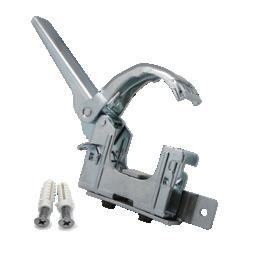
2024 ADVOCATE OF THE YEAR


2024 ADVOCATE OF THE YEAR
cULus Listed ESFR Sprinklers for Roof Deck Heights up to 48 ft.

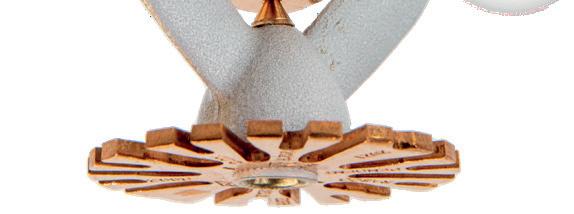
Model P25
• 40 ft. tall storage
• 5 ft. min. aisle width
• 50 psi operating pressure

• Single- and doublerow open frame racks
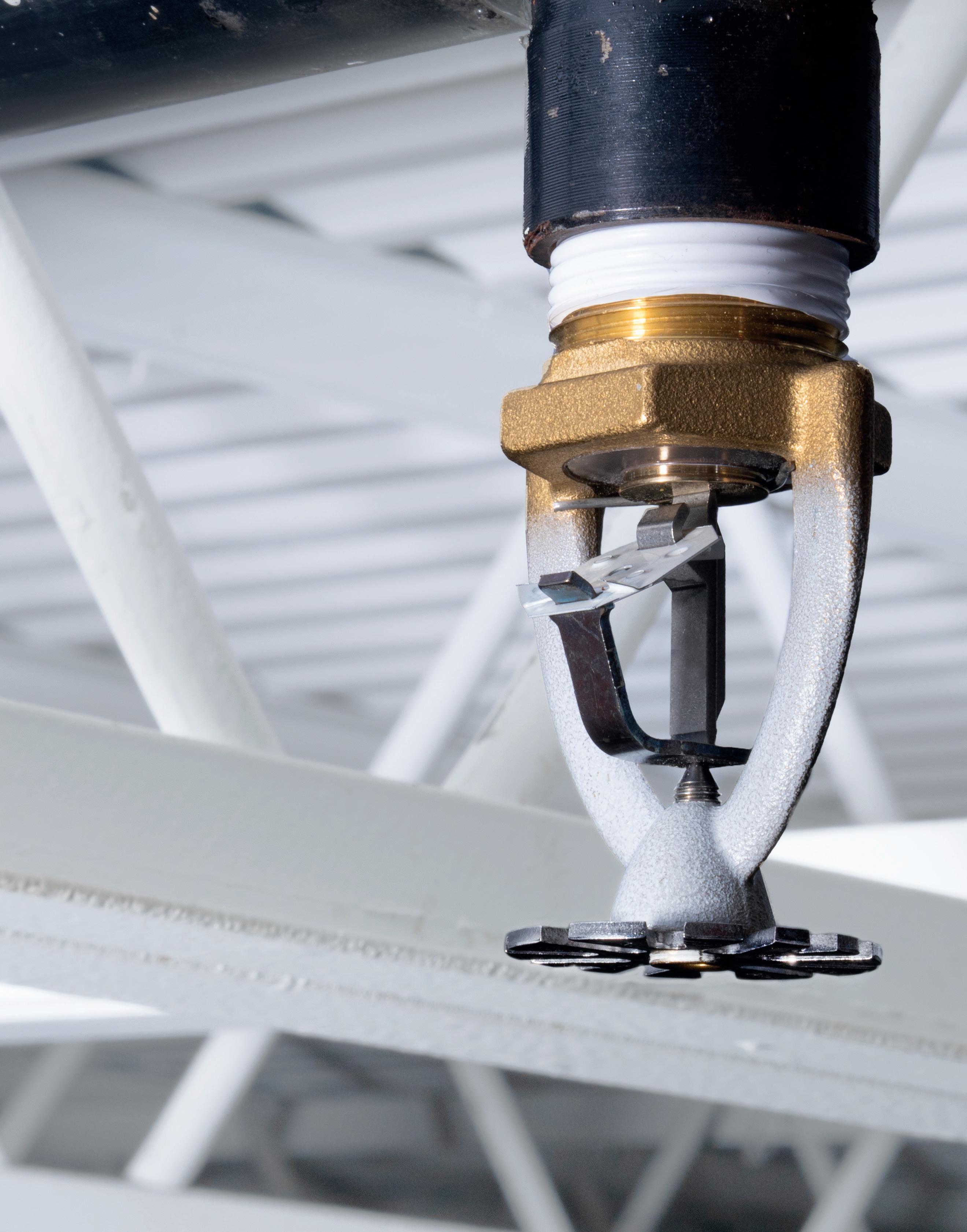
Model N28T6
• 43 ft. tall storage
• 4 ft. min. aisle width
• 35 psi operating pressure
• Single-, double-, and multiple-row open frame racks

Model N28T3
• 43 ft. tall storage
• 4 ft. min. aisle width
• 35 psi operating pressure
• Single-, double-, and multiplerow open frame racks
• 3 in. transverse flue spaces in single- and double-row open frame racks
• See Reliable Technical Bulletins 070 and 082 for complete details and limitations.
• Reliable has developed, and ASTM International has published, an Environmental Product Declaration (EPD) for the Model P25, N28T6 and N28T3 sprinklers.

A less expensive, more effective corrosion mitigation solution for dry pipe and pre-action fire sprinkler systems.
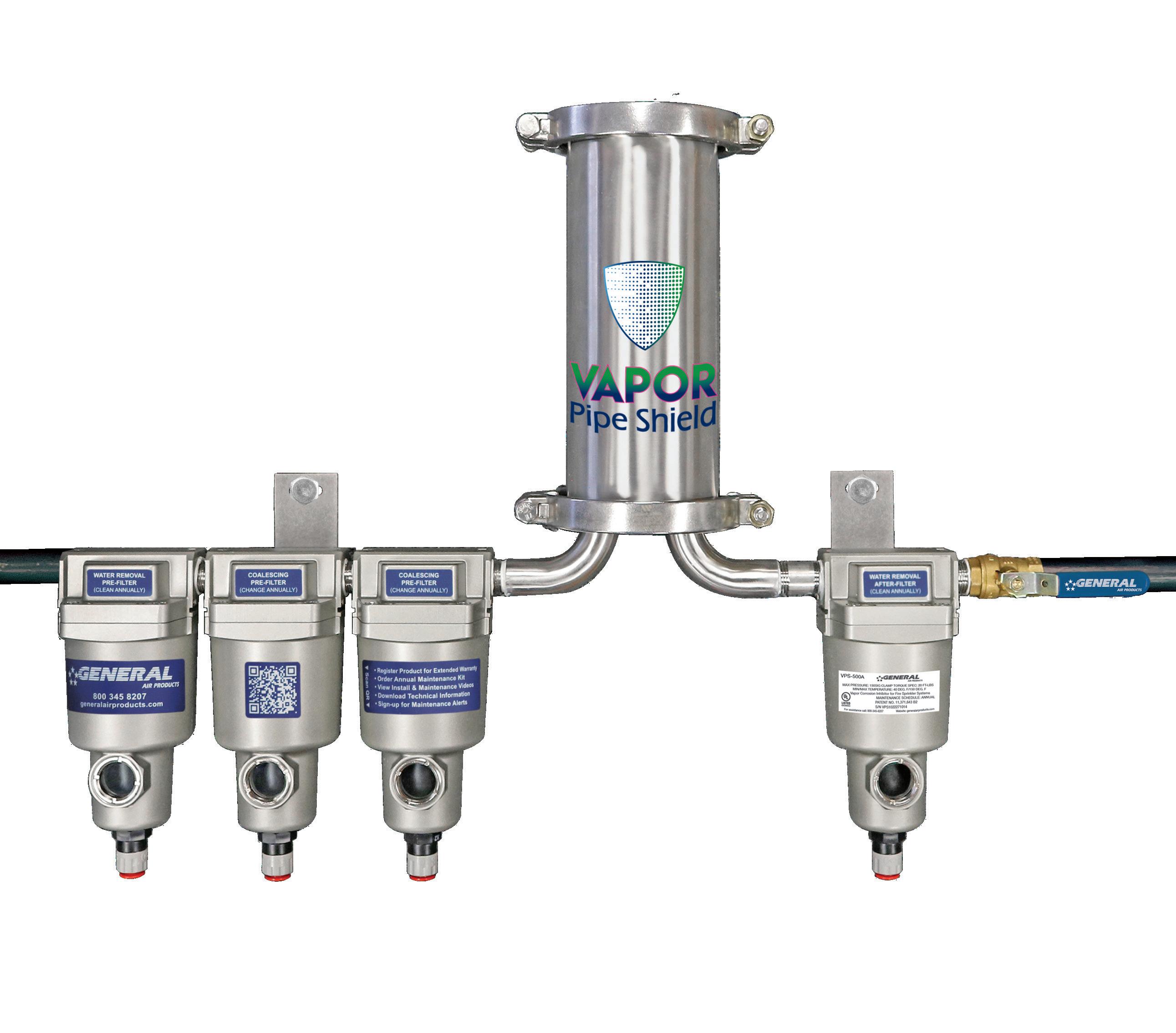
Full system protection. With Purge: 10 Days Without Purge: 21 Days Tested and proven.
Victaulic Vortex™ is the world’s first hybrid fire extinguishing system.
In 2020, NFPA 770 made its official debut as the Standard for Hybrid Fire Extinguishing Systems (water and inert gas), setting the stage for future standards and code development for today's crucial applications. When protecting what's most critical, think Victaulic Vortex™ .
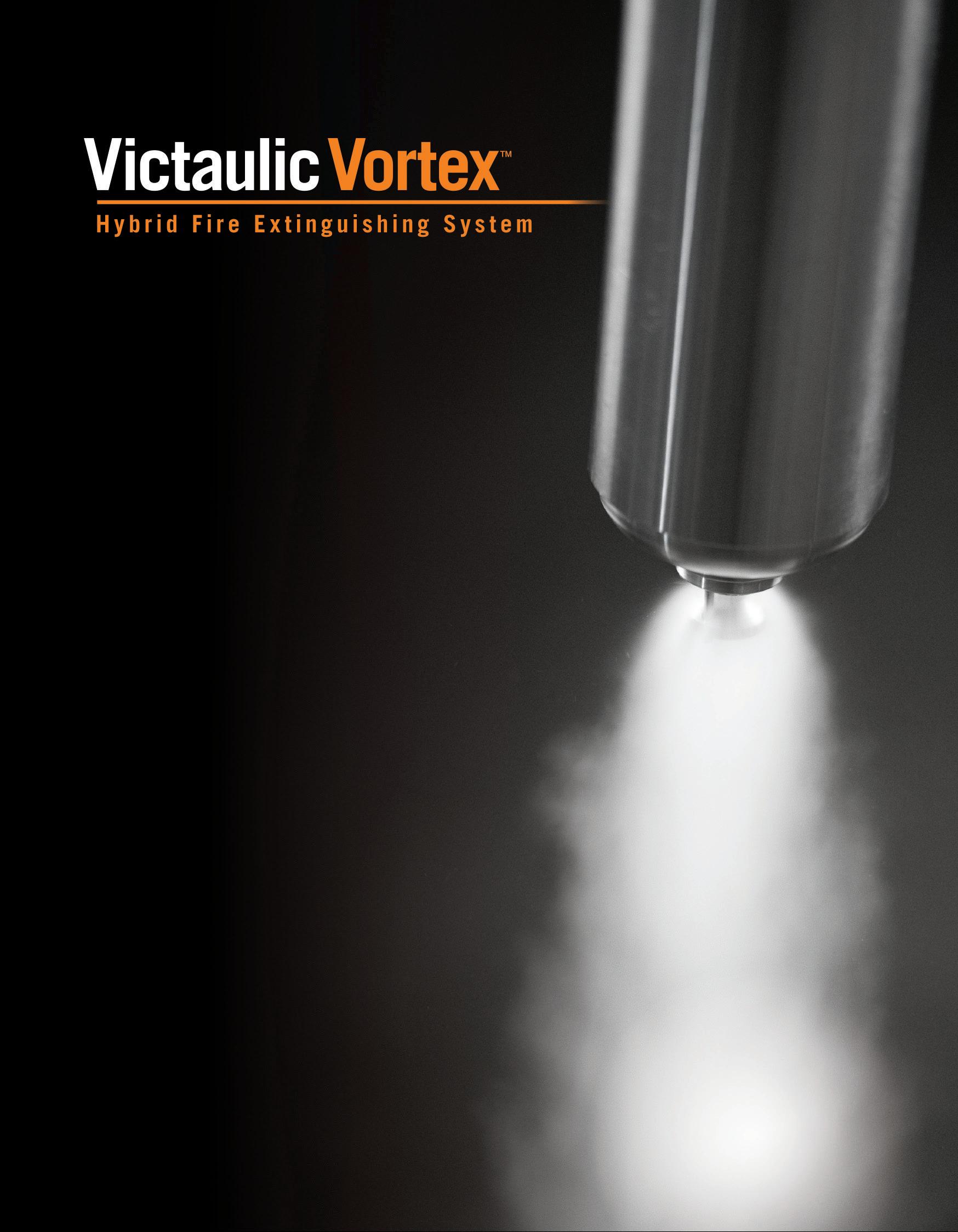



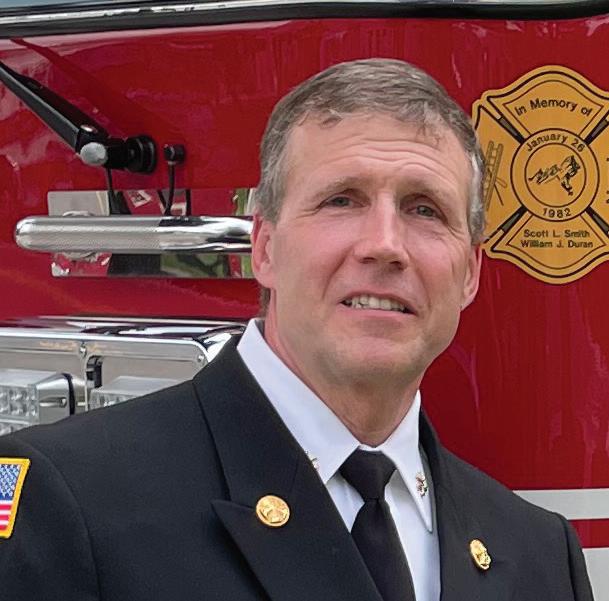


Itrust you and your loved ones had a fun and safe July 4th celebration. We are truly privileged to reside in a nation that commemorates the momentous occasion when our Founding Fathers signed the Declaration of Independence on July 4, 1776. Presently, we enjoy the benefits of living in a liberated and independent country. May we always remember the profound sacrifices they endured to preserve our cherished liberties.
Your president, Bob Caputo, multiple AFSA staff members, and I attended the NFPA Conference in Orlando, Fla. AFSA’s booth was an engaging and productive connection experience for everyone! NFPA is the leader in developing life safety and property protection codes. This year, they offered many seminars on lithium-ion battery storage fire protection and focused on the growth of Latin American countries and their need to adopt and teach NFPA codes. We met with Mariana Barrios, CEO of EnginZone Training in Latin America. She wants to introduce our apprenticeship training program to South America and Spain. We have already started translating our training materials into Spanish, which many of our members requested. AFSA43 is only a few short months away! Our staff and convention committee, chaired by Don Kaufman, has a full slate of seminars and evening activities lined up. If you have not already, mark your calendars for Sept. 18-21, 2024, and plan on attending. The Gaylord Rockies Resort in Denver is going to be an exceptional venue. If the early-bird registration numbers are any indication, we may again have record-breaking attendance. Be a part of the record. One of the main attractions is the incredible apprentice competition and our sold-out exhibit hall. Additionally, on Sept. 18, we will have a Women in the Industry panel discussion and networking event from 3:30 to 5:00 p.m. open to all. That evening, the new attendee reception (5:15 to 6:15 p.m.) is a key event to ensure new attendees meet the Board, staff, and fellow attendees, adding to their experience and desire to attend future conventions.
Do you serve as an AFSA chapter executive director/leader, or board member and never attended convention? AFSA has created a convention scholarship for local chapter leaders to have an opportunity to attend—a full conference registration and up to $500 in travel expenses. If you are interested, contact your local AFSA chapter for details and submit the necessary forms.
Congratulations to David Lowrey, division chief/fire marshal for the City of Boulder, Colo., who is our Fire Sprinkler Advocate of the Year, and to Holly Gray-Salmon, vice president of finance for Foothill Fire Protection, Inc. in Loomis, Calif., for being selected as our Joe Heinrich Young Professional of the Year. Another worthy note of congratulations goes to Russ Leavitt, a new member to the NICET board of governors, who will take my place as of July 1, and represent Water-Based System Layout. He will be joining an amazing, energetic board headed by new Chair David Madole, SET, and Chip Hollis, CAE, vice president of credentials.
Know that your Board of Directors, president, AFSA staff, and over 70 committee members are fully engaged in providing our contractor and associate members the best programs and products for you to be successful. We live our mission statement (see page 5). In the May/ June issue of Sprinkler Age, Bob Caputo’s “AFSA President’s Report” included a call to action in protect and support the foundation of the merit shop contractor by joining your local ABC (Associated Builders and Contractors). AFSA has joined. ABC is well versed and funded in the political and legislative arena to support open shop labor. Contact your local ABC chapter to join. It’s a great investment to protect our businesses and industry within the political arena (www.abc.org). I will see you in September! The Mile-High City awaits! n
BOB CAPUTO, CFPS, Publisher, ext. 124 bcaputo@firesprinkler.org
D’ARCY G. MONTALVO, Editor, ext. 115 dmontalvo@firesprinkler.org
ADVERTISING: 214-349-5965
CLARISSA RIOS, Communications Coordinator, ext. 134 crios@firesprinkler.org
CIRCULATION: 214-349-5965
D’ARCY G. MONTALVO, Editor, ext. 115 dmontalvo@firesprinkler.org
AFSA BOARD OF DIRECTORS
LINDA M. BIERNACKI, Chair, 318-841-0330
PAUL DELORIE, First Vice Chair, 603-432-8221
JAY STRICKLAND, Second Vice Chair, 301-474-1136
ROD DIBONA, Treasurer, 605-348-2342
JEFF PHIFER, Secretary, 803-438-2994
JACK A. MEDOVICH, P.E., Immediate Past Chair, 804-222-1381
BROOKS BAYNE, 503-692-9284
TOMMY CLEMENTS, 804-459-2218
LYLE HALL, 858-513-4949
CHRIS JOHNSON, 727-5821-9339
R. DONALD (DON) KAUFMAN, 505-884-2447
MICHAEL F. MEEHAN, 804-459-2200
WAYNE WEISZ, 209-334-9119
BOB CAPUTO, CFPS, President, ext. 124
JOHN AUGUST DENHARDT, P.E., FSFPE, Vice President, Engineering & Technical Services, ext.121
MEDA MERRITT, Vice President, Membership, ext. 133
MELISSA ATHENS, Vice President, Finance, ext. 112
LESLIE CLOUNTS, Vice President, Education Services, ext. 130
ROGER GRAGG, Director, Marketing & Information Technology, ext. 116
Sprinkler Age is devoted to the professional development of the fire sprinkler industry. Deadline is 1st of the month preceding publication.
Published by American Fire Sprinkler Association, 1410 East Renner Road, Suite 150, Richardson, TX 75082. Call (214) 349-5965, FAX (214) 343-8898, or email sprinklerage@firesprinkler.org for information.
Copyright © American Fire Sprinkler Association, Inc. All rights reserved. PRINTED IN USA. Unless expressly stated otherwise, all editorial and advertising material published is the opinion of the respective authors and/or companies involved and should not be construed as official action by or approved by Publisher or the Association.
Sprinkler Age is a membership benefit, provided free of charge to AFSA members. For information on non-member and/or foreign subscription rates, call (214) 349-5965.
LINDA M. BIERNACKI AFSA BOARD CHAIR
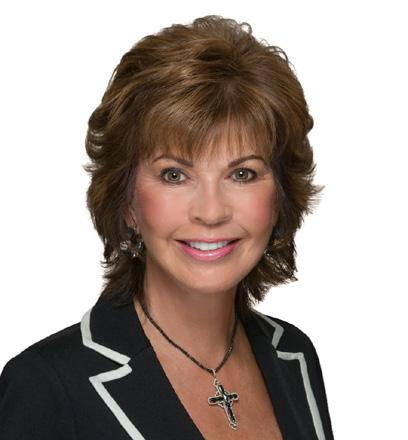
AFSA annual membership dues are a sliding scale for Contractors and Associates and a flat fee for Authorities Having Jurisdiction. (Members receive a free subscription to Sprinkler Age.) Write or call AFSA for membership information. See AFSA’s website at firesprinkler.org.


Viking’s new low-flowing K3.7 sprinkler, the VK495 Residential Concealed Pendent, is optimized at the 14’ x 14’ coverage area flowing only 10 gpm at 7.3 psi! The cULus Listed sprinkler rounds out the robust residential concealed sprinkler line from Viking, making it a one-stop-shop to find every residential protection solution needed.
Learn more at vikinggroupinc.com.
Viking’s revolutionary Sprinkler Selector ensures that you can find the right sprinkler for the job — every time. Get started today by visiting webtools.vikingcorp.com/sprinklerselector.
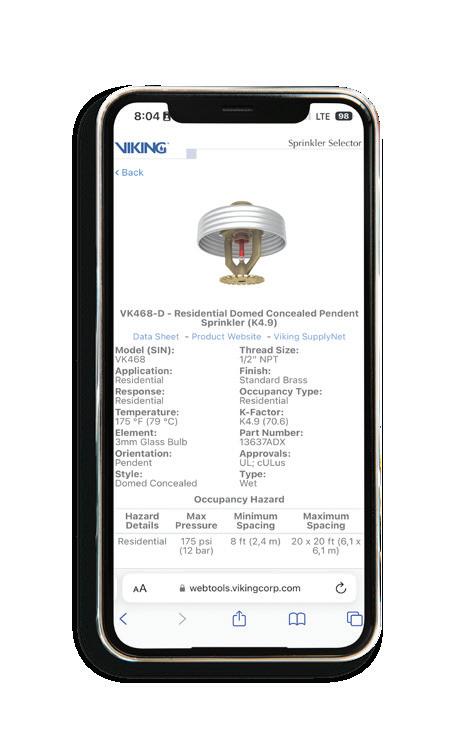
Have you ever noticed how we’re marketed by advertisers for products and services? Or perhaps you’ve noticed the changes in the way products and services are promoted, packaged, or used to convince us as consumers what we should be using, doing, saying, and thinking…. “When I’m drivin’ in my car, and the man comes on the radio—he’s tellin’ me more and more about some useless information—supposed to drive my imagination…”
For years, it bugged me how many products were labeled as “new and improved.” I’d pick up a tube of toothpaste labeled “new and improved” and wonder if I needed to throw away the older tube because it was old and unimproved—that is, until I read the ingredients and learned what was new and improved was the packaging, not the product. This turned me off to advertising, so much so that while I could remember most commercials I’d seen or heard, I couldn’t associate them with the product they were marketing and selling. Well, except for the Budweiser frogs but then again, who needs commercials or ads to know we need to buy beer? The point is that Limu Emu doesn’t entice me to run out and purchase an insurance policy with Liberty Mutual.
Recently, it occurred to me that what is new and improved nowadays is the tagline used by advertisers: the new and improved line is a “game changer.” We hear this term used in so many ads; in many cases, it’s a pop-up that appears so quickly it becomes almost subliminal. This has me thinking about how and why so much money is spent bombarding us with these repetitious tag lines and how they impact our thinking. Clearly, it must be because it works, or they wouldn’t do it. Of course, these random thoughts always work their way around to what we are doing here at AFSA as it relates to recruiting and retaining members and, equally as important, how we deliver our goods and services to our members.
Are we changing the game for our members in a way that makes your business and your people better at what you do? That is one of our primary goals and objectives. I know the term “game changer” is intended to be a relatable euphemism, but the connotation takes away from the critical mission our industry serves. We’re not playing games here. Maybe if I were a professional athlete in a slump, I’d be looking for a game changer, but our chosen profession requires a lot of training and education, continual learning, skills, and products that save thousands of lives of people we will never meet and never hear about or from.
Big-time marketing aside, AFSA staff is continually delivering new and improved, game-changing products and services to our members, who demand value for the time and money invested in this association. We continue to develop, update, and deliver the products our industry needs most, including training and educational materials for fitters, designers, and inspectors. We continue to deliver these services in ways that are cost-effective and considerate of the time away from daily routines and the cost impact on day-to-day business. Yet, with all of that said and done,
we’re still not filling seats nor shipping out training materials at levels that indicate we’re meeting the needs and demands of our customer base. We need a new and improved, game-changing way to deliver the message as measured by the level of participation. Training and education are the hallmarks of this association.
AFSA was founded by forward-thinking sprinkler contractors who knew what would be needed to sustain and grow the merit shop movement. It’s concerning when we hear from members across the country that our industry cannot find the talent necessary to perform the backlog of work or expand their business because there are not enough sprinkler layout technicians, fitters, or inspectors. Except for California and Florida, where certification programs are in place, we don’t see contractors recruiting or hiring to fill the gaps created by the number of older workers retiring from the trade. As observed in the past, sprinkler fitter unions have also failed to indenture enough apprentices to fill the needs of signatory contractors. Want to guess where they’ve been recruiting from?
Even if we see a slower construction economy in the months ahead, our industry is expanding, and more people are aging out than those replacing them. We’ve weathered the ups and downs of economic change very well and we stayed busy, even during the COVID-19 pandemic. How can anyone afford not to have a training program in place? Equally as important is the question of why members would hire an administrative person, with pay and benefits, to manage training programs that AFSA staff will manage for you at minimal costs?
Do members and non-members not see or hear about our new and improved, game-changing training programs? Your AFSA Board and staff are leading the way with educational programs designed to train your people and prospects for next-generation candidates to join this wonderful business. We can’t afford a Super Bowl ad to get the message out, but we will still buy beer. I want to encourage every member to take a fresh look at the AFSA website and consider our Beginning Design School, Intermediate Design School, Advanced Hydraulics course, ITM training courses, Sprinkler Fitter Apprenticeship, and our Virtual Instruction Program (VIP) virtual classroom training programs to help grow businesses, limit liabilities, and continue to bring new blood to sustain our industry going forward.
If you don’t see the courses you want or need, tell us what you do need. We can develop almost anything, given the time and the budget. See you all in Denver! n
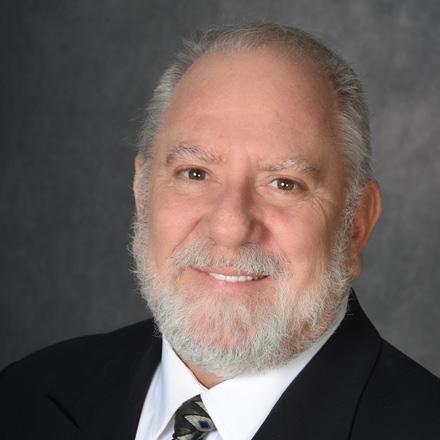

As fabrication evolves, so do we. We stay on the leading edge of technology and technique to give our customers the best in the business. For us, that looks like automatic welding, data-driven processes and ISO certification. For you, that looks like reduced risk, improved consistency, more accurate timelines and industry-leading quality specifications. For a commitment to continual improvement, choose Ferguson Fire & Fabrication.
I’m writing this column while sitting at the annual 2024 NFPA Technical Meeting, where the NFPA membership’s opinions on a particular issue can be heard. At this meeting, there were Certified Amending Motions (CAMs) on several NFPA standards that affect our membership. AFSA’s entire technical department, AFSA’s Chair of the Board Linda Biernacki, AFSA’s President Bob Caputo, and our sprinkler industry members and friends discussed the issues that we had concerns with and made our positions known to participants. Our positions were determined based on the outcome of the AFSA’s Technical Advisory Committee (TAC) meetings held in March and May of this year.
To be eligible to vote, an individual must be an NFPA member for at least six months before the annual Technical Meeting and attend the Technical Meeting in person. There were approximately 400 voting people in attendance. The politics of the process was very interesting, especially with one organization having about 100 individuals in attendance. The Technical Meeting lasted approximately seven hours, with a 30-minute lunch break. In this issue, Kevin Hall provides the specifics of the proceedings. (See page 40 for his “Higher Standards” column.) However, I can proudly state I was happy with the outcome.
The 2025 edition of NFPA 13 is essentially complete at this point. NFPA 13D, 13R, 24, and 291 were already issued by the Standards Council. This process has taken almost three years to reach this point. Unless someone closely follows the standard development process, most of the preliminary work is done outside of the “public” view. Let me state that the NFPA standard development process is very open if you have the interest and time to participate. In reality, most users of the documents are so involved in their daily work and personal lives that “public” participation is usually very limited. For example, NFPA 13 consists of five separate Technical Committees. In most cases, pre-first draft, first draft, and second draft meetings occur for each Technical Committee. That adds up to 15 meetings just for NFPA 13. AFSA participated in each of these meetings to protect our members’ interests. Do we always get what we want? Heck no. However, through discussions and negotiations, AFSA has done very well. Our positions are based on a strong foundation, and our reputation carries some weight. Currently, AFSA is represented on 55 NFPA Technical Committees with 118 individual seats covering 45 different NFPA standards. The TAC makes recommendations to the AFSA staff on appointments and positions to take on issues. This broad coverage and size of our membership allows AFSA to “season” the sausage to what we want to see for our members. Specifically, as I stated at the first TAC meeting in March of this year, I want and expect the following of our representatives in this order of priority:
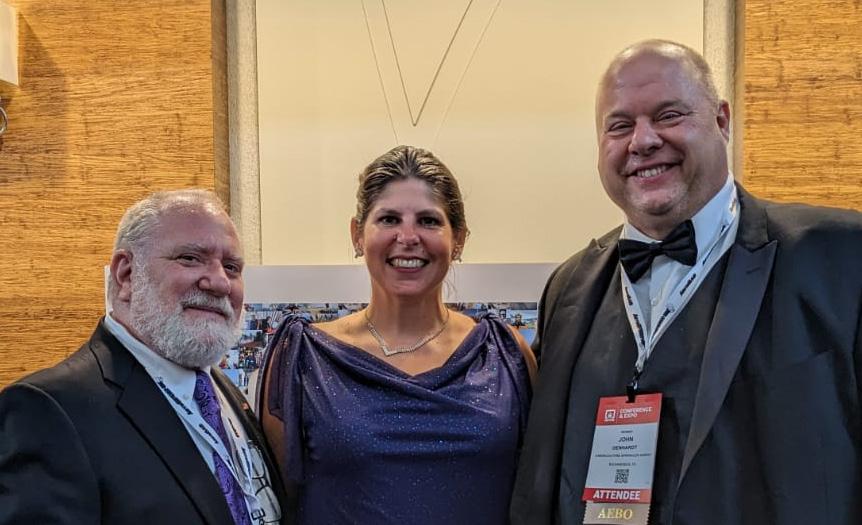
From left to right: AFSA President Bob Caputo, AFSA Director of Program Development & Special Projects Victoria Valentine, and I had a great time at the 2024 NFPA Stars at Night Awards Dinner.
1. We will always support what is best for reasonable fire protection. We do not desire the absolute best fire protection, nor will we accept fire protection that is substandard. 2. We will always do what is in the best interest of our members. We are a sprinkler contractor’s association with valuable associates and AHJ members. Where possible, we will represent all members’ interests.
The NFPA standard development process is not always pretty, but the same is true with making sausage. Many different types of meats, spices, and other ingredients are blended together to make the perfect sausage. However, every chef and individual might prefer a different combination and cooking method for the flavor and style they like best. What needs to be stated clearly and loudly is the NFPA standard development is a consensus process. This allows all interested parties, including the public, to participate. Not all standard development processes can state that. Your AFSA team ensures that our members’ interests are represented in the sausagemaking process.
On a personal note, did I tell you my favorite type of sausage is rope celery, followed by Polish (with my family’s recipe)? I am also proud to announce the birth of my first grandchild in April. Having a grandson does change one’s perspective. Hopefully, I can pass on my passion for fire protection and guidance on life issues to Zachary. Could he be a future Fire Protection Engineer? I can always dream! n
JOHN AUGUST DENHARDT, P.E., FSFPE AFSA VICE PRESIDENT OF ENGINEERING & TECHNICAL SERVICES

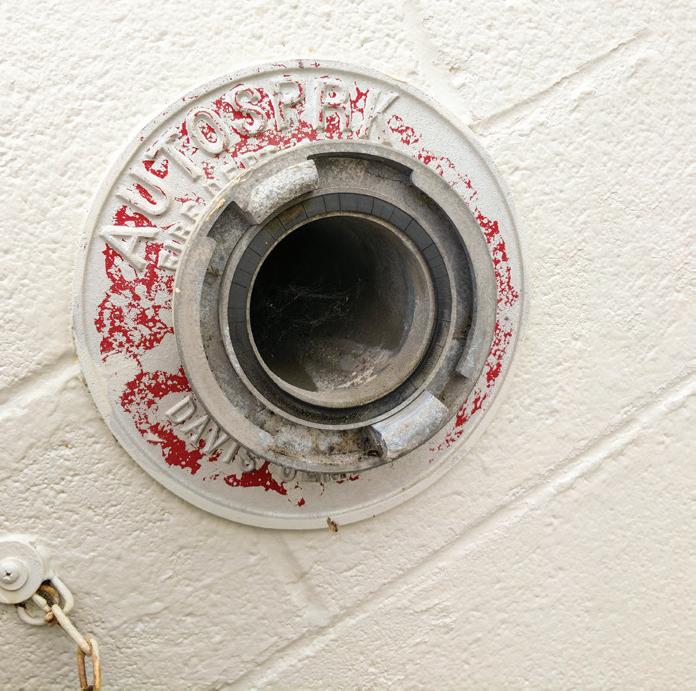

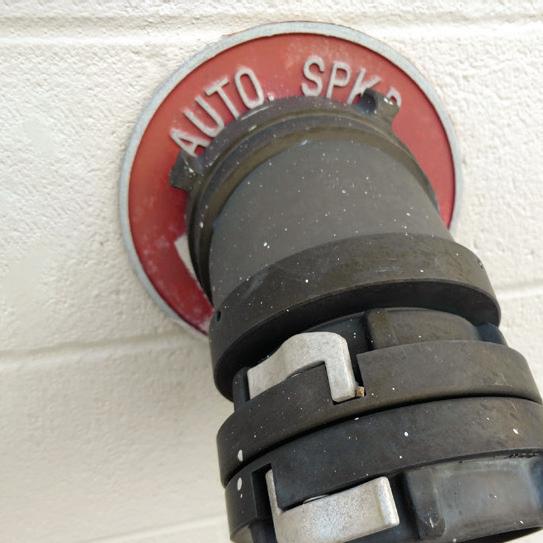
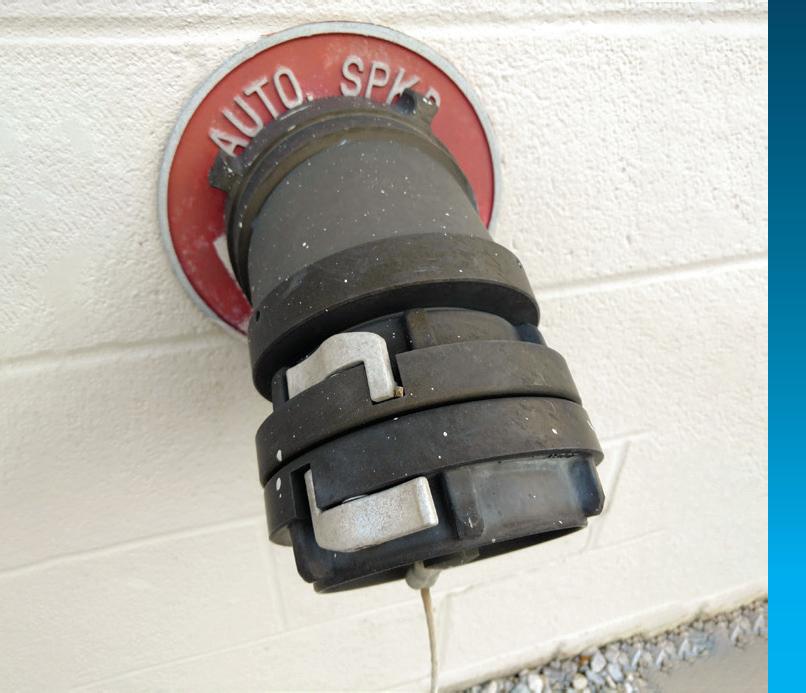











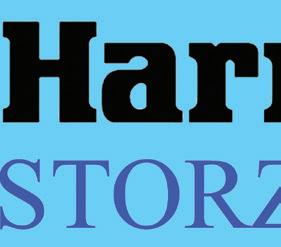

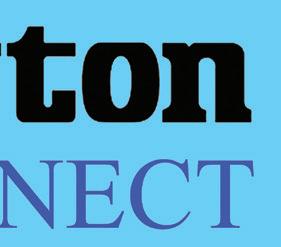
D’ARCY
David Lowrey may not have started with a passion for fire protection, but a spark of interest became a lifelong dedication to the community, the industry, and the public. From beginning as a plan reviewer and inspector of fire protection systems to now serving as division chief/fire marshal for Boulder, Colo. Fire-Rescue, Lowrey has never wavered on his support of automatic fire sprinklers. He has actively developed the codes and standards related to these systems and was instrumental in passing a residential sprinkler ordinance in his city.
Lowrey isn’t interested in slowing down as he nears a typical retirement age after 30 years in the fire service. He proactively educates his constituents on the life- and property-saving benefits of residential sprinklers and serves within state and national organizations to aid in that effort. Noting his work on many levels to support his goal of residential sprinkler acceptance, the American Fire Sprinkler Association (AFSA) is proud to honor Lowrey as its Fire Sprinkler Advocate of the Year.
Lowrey grew up in Oklahoma, where rural land abounds. He is a proud Oklahoma State University (OSU) alumnus and first obtained an agricultural degree. He met his wife at OSU and found himself working in construction while his wife earned her master’s degree. Lowrey heard about OSU’s program for safety engineering at work and thought it might be “cool.”
“I found out I didn’t like safety at all, and I didn’t enjoy learning about it,” laughs Lowrey. “But I had to take some fire protection courses, which fascinated me! I fell in love with the FPE side of this industry.”
Lowrey looked more into fire protection and enrolled in Professor Pat Brock’s “Intro to Fire Sprinklers and NFPA 13” class. “Realistically, that put the nail in the coffin for me,” Lowrey remembers. “I was like, ‘This is it. This is what I want to do.’”
While at OSU, Lowrey also became involved in firefighting and earned his Firefighter 1 certificate. “I was definitely intrigued by fire science and what was involved in fighting fires, but I also knew I didn’t want to be a full-time firefighter,” Lowry remembers. “I started thinking I might enjoy working in the fire service for a municipal department.”

After he earned his Bachelor of Science in FPSE Technology, Lowrey worked as an FPE at a Department of Energy site. “It was a fantastic job with amazing co-workers, but I quickly discovered it wasn’t what I wanted to do.”
Lowrey started applying for municipal FPE positions and was hired as the FPE at the City of Boulder [Colo.] Fire Department, where he gained extensive experience in plan review, inspecting, and acceptance testing of fire protection systems. Lowrey served in that role for eight years. He was then promoted to division chief/fire marshal, overseeing the community risk reduction division, including code enforcement, building construction, life safety education, and fire investigations.
“I think being a public servant is one of the best jobs you can have,” Lowrey states. “I enjoy working with people and serving the community. This is a position where I feel I can work with the community and building industry and make a difference.”
The City of Boulder passed an aggressive commercial fire sprinkler ordinance in 1989 where any new buildings over 2,000 ft2
are required to be protected by a sprinkler system. There was some pushback, but it became accepted and nationally known. The ordinance was in place at the time of Lowrey’s arrival at the department in 1996. “My predecessors considered how large of a building fire they could control at that time with the resources they had, and determined if was over 2,000 ft2, it needed to be protected by a sprinkler system,” he says. The city recognized the valve in fire sprinklers to create a resilient community.
Since then, every time the city adopted a new fire code, that commercial ordinance was always included. “All the builders in my area just accepted it—no discussion or argument,” states Lowrey. “I felt fortunate coming into a community with that. I was impressed with that ordinance and that it was being enforced and accepted.”
The 2,000 ft2 included residential occupancies; however, there were exceptions that allowed a house larger than 2000 ft2 to omit sprinklers if there was adequate access to the home. Townhomes and multi-family residential occupancies that have three or more units were required to be sprinklered regardless of square footage and/or access with the adoption of the 1997 Uniform Fire Code
In 2009, the International Residential Code (IRC) required residential sprinklers for all new one- and-two family dwellings. “We didn’t adopt that code and continued adhering to the 2006 codes,” notes Lowrey. “When the 2012 edition of the I-Codes came about, I ‘geared up’ to adopt the residential fire sprinkler portion, with building officials and the fire chief on board.”
Lowrey researched and prepared a package to present to the city council that contained statistics, cost estimates, and examples of neighboring communities with residential ordinances. “They just shot me down,” remembers Lowrey. “It was a gut punch! It was a hard pill to swallow because we already had this aggressive, wellknown reputation that we ‘sprinkler everything.’”
Lowrey attributes the council’s turning down the proposed ordinance to several factors. “The architectural community came out against the ordinance, and cost was a large part of the conversation at the time,” he says. “In September 2013, we experienced massive flooding in our city—a bona fide natural disaster. We were coming out of that when we started adopting the 2012 I-Codes, and I think some of the council members’ minds just weren’t on anything other than flood recovery at that time.”
The city skips every other cycle for code adoption, so Lowrey knew he wouldn’t get another chance to push for residential sprinklers until 2018. That time, he took a different strategy. “I didn’t bog them down with a lot of reports and statistics and research. We didn’t go through all the cost estimates for our area. It’s a very high cost of living here. Almost every home is a custom build, and land is at a premium. I decided to focus on other trade-offs, such as the environmental aspect—less water used, less greenhouse gas emissions, and less construction material in landfills due to a home fire. If I was asked about cost, I decided to say, ‘Yes, residential sprinklers cost money, but they are in range with other items you’re installing, like counters and carpeting.’ But I didn’t get asked!” he chuckles. “It was a completely different city council by this point.” Lowrey also took the time to gain the support of local

Lowrey joined Boulder Fire-Rescue as an FPE and was then promoted to division chief/fire marshal.
residential developers and the architects for the ordinance. In 2018, the ordinance passed with little to no discussion.
Lowrey notes that it can take a very long time to accept things once they’re in the codes. “It takes time for AHJs to start enforcing what we know we should be enforcing. In 2009, the IRC put a minimum safety requirement for all new one- and two-family dwellings. We are 15 years later; everyone must accept this minimum safety requirement. We can’t keep amending it out of our codes based on cost or because it’ll hurt our building industry or for any other reason! Home builders aren’t opposing residential sprinkler ordinances like they once did. Communities are starting to say, ‘This has been in the code for over a decade. It’s a safety issue.’ We AHJs cannot amend it out.”
Lowrey notes that his city isn’t an example of a typical residential sprinkler ordinance community. “I’m not building neighborhoods in my community. Here, two million dollars are spent to buy a lot with a home that’s torn down, and a threemillion-dollar home is built. We aren’t typical, but we see other communities in our region that are building large neighborhoods and master-planned communities adopting the same type of ordinances. City council members and county commissioners aren’t questioning residential sprinklers as they once did, and there’s less resistance to adoption.”
But he does see progress in his region for the residential sprinkler movement. “In the Denver area, communities are starting to fall like dominos when adopting residential sprinkler ordinances. Big communities, unlike ours, are building large neighborhoods that require sprinklers for one- and two-family dwellings. That will have a significant impact on fire safety and the protection of those people from fire as well as the emergency responders.”
Lowrey is active in fire protection organizations, including the Fire Marshals Association of Colorado (FMAC), where he served as president for two terms. Lowrey manages and is an instructor for what’s commonly called the “prep class” for FMAC. “It’s is a three-day class to prepare inspectors, fire marshals, and other industry professionals to take the International Code

Council Fire Inspector I and Fire Inspector II certification test.” “It’s an outstanding organization,” he notes.
He is also a member of and committee chair for the Colorado Fire Sprinkler Coalition, which is dedicated to promoting the installation of fire sprinklers in future generations of homes. The coalition is a resource for information about home fire sprinklers and, through a cooperative effort with stakeholders, works to identify and overcome barriers to the acceptance of sprinklers as a critical component of home fire safety.
Lowrey is a member of several national organizations, including the International Association of Arson Investigators (IAAI), the National Association of Fire Investigators (NAFI), and the National Fire Protection Association (NFPA). He serves on the NFPA 3, NFPA 4, and NFPA 72 Technical Committees, NFPA 13 Installation Technical Committee, and NFPA 13 Correlating Technical Committee. Lowrey is the current chair of the NFPA 10 Technical Committee and the NFPA 72 Fundamentals Committee. He also serves as an alternate member of the NFPA 13R and NFPA 13D Technical Committees. In addition, Lowrey is a member of the UL STP 1389 committee.
“I’ve been working on NFPA Technical Committees since 1998 when I was selected for NFPA 72 and haven’t stopped,” comments Lowrey. “When I started, I developed this reputation as the fire alarm guy, but I was always thinking about fire sprinklers, too.” Eventually, Lowrey was accepted to the NFPA 13 Installation Technical Committee and to the Correlating Technical Committee as an AHJ and enforcer. “It was a highlight in my career to know that I am a part of NFPA 13 and its development.”
Lowrey has also served as an NFPA instructor for almost two decades. “They were looking for Technical Committee members to teach,” Lowrey says. “That’s been another highlight for me. I love to educate people on the code and give them insight on the intent and another interpretation to what they may see.”
Lowrey thinks there is still a long road ahead to gaining residential sprinkler acceptance. “We may be seeing more commu-
nities adopting residential sprinkler ordinances, and the building industry is coming to terms with them, but we still have a ways to go in educating our community. I receive many phone calls from homeowners building a home who say their architect says they have to install fire sprinklers and ask for an exemption. My response is, ‘Why would you want to do that?’ They only know of the myths. You must explain the purpose of residential sprinklers and why they don’t want to exclude them.”
One of the first people Lowrey educated about residential sprinklers was his parents. “They retired about the time I moved to Colorado on 30 acres in a rural area. I had them install residential sprinklers when they built their home. While they’re protected by a great volunteer fire department, it takes time for them to arrive. They were a little hesitant, but they did it. It’s never had to operate, thank goodness, but it’s protected them all these years.”
Lowrey must be proactive about protecting residents in rural areas of his city and worries about protecting those living in a wildland-urban interface (WUIs). “We don’t want a house fire starting a wildfire, and residential sprinklers are going to help prevent that. If your home is in a WUI, we’re going to require you to install residential sprinklers. If the fire moves outside of the home, we run the risk of jeopardizing our community.”
“This career that I’ve been blessed with would not be possible without my family,” notes Lowrey. “My wife, Marnie, and I have been married 33 years, and she has supported me the whole time. So has my son, Cory. He grew up around sprinklers and fire alarms. I frequently left to teach classes, attend committee meetings, and serve the community. They have supported my time away, and they have never complained. I’m so grateful for them.”
“I really enjoy working with people,” Lowrey summarizes. “I’m at that point in my career where everyone asks me when I’m retiring, but I still love coming to work every day. I really stumbled into the fire service, and my wife always says, ‘You’re one of the few people who found a job that they love doing and have stayed there the whole time.’ I agree with her. I’m very fortunate to have found a job that I love and serve an amazing community.”
AFSA’s Fire Sprinkler Advocate of the Year Award was created to honor individuals not directly involved in the fire sprinkler industry whose efforts have had a national impact in advancing life safety and property protection with fire sprinklers. Each year, AFSA’s Legislative Committee selects a recipient from a pool of nominations. Their nomination is then approved by the AFSA Board of Directors.
“I could not be more pleased to have our industry bestow this honor on Chief Lowrey,” comments AFSA President Bob Caputo, CFPS. “I have had the privilege of knowing and working with him on numerous NFPA standards committees and task groups where his experience and his advocacy for fire and life safety leads the conversation as well as the results.”
He continues, “Chief Lowrey chairs multiple standards committees where his sense of fair play and ensuring all voices are
heard results in better code-making processes as well as better codes and standards for the entire nation. Recognizing his dedication, hard work, and passion has been long overdue, and we are proud to be able to honor this industry icon and friend.”
Lowrey’s nomination was sent in by Terry Victor, director of risk control services, Risk Suppression Partners LLC. “David has been an advocate for fire sprinklers for many years. Serving on several NFPA technical committees, including the NFPA 13 Correlating Committee and the SSI and RES technical committees, has given him the experience and understanding of the necessity and value of sprinkler systems.”
“I have worked with David for the past 15 years or so both on NFPA Technical Committees and as an NFPA instructor,” comments Russ Leavitt, CFPS, S.E.,T., executive chairman and board member, Telgian Holdings, Inc. “He is one of the finest gentlemen in our industry. He is an engineer and code enforcer with the ability to tackle challenges utilizing a practical approach based on reasonableness in seeking solutions. He is highly respected in the codes and standardsmaking community for his willingness to listen to other points of view while working towards achieving consensus. When Dave speaks, others listen. He is the consummate teacher, and his confident yet humble style is something I and others admire. He has shared his knowledge with thousands of learners over his career.”
Leavitt continues, “Dave is a sprinkler champion and has worked tirelessly to ensure that the use of fire sprinklers is an integral component of all community risk reduction programs. There is no bigger advocate for fire and life safety, with a heavy emphasis on the use and effectiveness of fire sprinklers, than Dave Lowrey.”
“I have known Dave for the better part of 20-plus years, both in his role as an AHJ and as a colleague on the NFPA 13 committee,” comments Steve Scandaliato, ET, CFPS, RME, principal, SDG, LLC. “This is the perfect award for someone like Dave, who, for me, has always exemplified the type of person a lot of us wish we were—one being quick to listen and slow to speak. I have long admired one of Dave’s strengths—his ability to listen and ask questions before jumping to conclusions. His work on the NFPA 13 committee has been invaluable since he is one of just a few AHJ members. His perspective on many of the more critical issues in the last few editions has always given many of us who are not so quick to listen an example of what you can learn if you are not talking.”
“In addition, as a fire marshal to whom I had to submit shop drawings for years, I could always count on him to be thorough and fair and above all understanding,” Scandaliato notes. “He knew the plight of the contractor and always did what he could to make things work for everyone involved. Congratulations, Dave, certainly well deserved!”
Lowrey will be presented with AFSA’s Fire Sprinkler Advocate of the Year Award during the general session at AFSA43: Convention, Exhibition & Apprentice Competition on Friday, September 20, at the Gaylord Rockies Resort & Conven-

Cory, for their support of his fire service career.
tion Center in Denver. To learn more and register for AFSA43, visit www.firesprinkler.org/AFSA43. n
EDITOR’S NOTE: Do you know someone who should be nominated for AFSA’s Fire Sprinkler Advocate of the Year Award? AFSA is proud to recognize those individuals who have given extraordinary support to furthering the advancement and awareness of fire sprinklers. All three of AFSA’s annual awards accept nominations year-round at www.firesprinkler.org/awards. (Member login required.)
1997 Dan Jones, Chapel Hill, North Carolina Fire Chief
1998 John Vendetta, Hartford Fire Chief
1999 V.J. Bella, Louisiana State Fire Marshal
2000 Dennis Compton, Mesa, Arizona Fire Marshal
2001 George Miller, National Fire Protection Association
2002 Jim Ford, Scottsdale, Arizona Fire Department
2003 Gary Keith, National Fire Protection Association
2004 Jan Gratton, Fire & Life Safety Educator, Covina, California Fire Department
2005 Senator Rick Santorum (R-PA)
2006 Meri-K Appy, Home Safety Council
2007 Rep. Jim Langevin (D-RI)
2008 Ron Hazelton, Home Improvement Expert
2009 Olin Greene, U.S. Fire Administrator
2010 Jim Shannon, National Fire Protection Association
2011 Jeff Feid, State Farm Insurance
2012 Tonya Hoover, California State Fire Marshal
2013 William Barnard, Maryland State Fire Marshal
2014 Peg Paul, Home Fire Sprinkler Coalition
2015 Ed Van Walraven, Aspen, Colorado Fire Marshal
2016 Ed Altizer, Virginia State Fire Marshal
2017 Randy Miller, Camas, Washington Fire Marshal
2018 Richard Smith, Maryland State Firemen’s Association
2019 Amy Acton, Phoenix Society for Burn Survivors
2020 Brian Geraci, Maryland State Fire Marshal
2021 H. Butch Browning, Louisiana State Fire Marshal
2022 Ron Siarnicki, National Fallen Firefighters Foundation
2023 Todd Short, Redmond, Washington Fire Department
2024 David Lowrey, Division Chief/Fire Marshal, City of Boulder, Colo. Fire Rescue
Come to the Mile-High City this fall to visit a mile-high list of exhibits at AFSA43, the American Fire Sprinkler Association’s (AFSA) Annual Convention, Exhibition & Apprentice Competition! Denver and The Gaylord Rockies Resort & Convention Center will host AFSA September 18-21 for the largest display of fire sprinkler products and services. This year’s exhibit hall is close to selling out and currently features 87 companies. Couple that with 55 technical and managerial seminars offering over 70 training hours, the 31st National Apprentice Competition (NAC), and networking social events, and you’ve got an event you can’t miss! AFSA43 is four days with nearly 600-plus decision makers representing approximately 200 contractor companies. Make plans now to attend the fire sprinkler industry’s premier event!
Connect at convention! AFSA43 offers a packed exhibit hall presented by the industry’s best manufacturers and suppliers. Both domestic and international companies will offer the latest technology, products, and services during two exhibit hall sessions: the everpopular Exhibition Grand Opening Reception on Friday, Sept. 20, from 3:30 p.m. – 7:00 p.m. and the unopposed Exhibit Hall Saturday, Sept. 21, from 11:30 a.m. – 3:30 p.m.
Hosted by AFSA Chair of the Board Linda Biernacki, president of Fire Tech Systems, Inc., Shreveport, La., the Exhibition Grand Opening Reception offers the first look at this year’s exhibits. Eat, drink, and network as you visit with manufacturers and suppliers across the expansive hall.
The next afternoon, the hall will open once again to attendees, with the 31st National Apprentice Competition simultaneously underway. This year, the sprinkler installation practical test will be centered in the exhibit hall, and convention goers can watch as the top seven apprentices cut, thread, and install a steel and plastic pipe system with sprinklers. Judges will perform a pressure test on each system and calculate points earned in this competition phase.
Do you feel the need—the need for networking? AFSA43 offers the best opportunities to make new connections and visit with tried-and-true friends! Contractors and exhibitors with an “all-access” registration can enjoy three hot breakfasts and three hot lunches. Gather together to share ideas, product information, and more.

The Gaylord Rockies is ready to welcome AFSA43 guests for a week of education, entertainment, fun, and relaxation!
The Gaylord Rockies offers the perfect setting for networking during AFSA43. The Opening Party will be held on the Front Lawn and the spirit of Colorado will be captured through local food, sounds, and activities. Try your hand at rock wall climbing, axe throwing, and other fun activities. Enjoy games like Giant Jenga and cornhole. Visit the photo booth and create an AFSA43 keepsake. Listen to a live band and enjoy a buffet and craft beer truck.
To bring AFSA43 to a beautiful close, attendees will gather at The Gaylord’s Mountain View Pavilion to watch the sunset over the Rocky Mountains, enjoy live entertainment, delicious food and drinks, and celebrate with friends. The highlight of the party will be the announcement of the NAC champion, who will receive bragging rights, $5,000 cash, tools, and a commemorative plaque. These are two events you won’t want to miss!
The luxurious Gaylord Rockies Resort & Convention Center, located conveniently between the Denver International Airport and city of Denver, is AFSA43’s headquarters hotel. Offering scenic mountain views, five beautiful restaurants, a fitness center, a world-class spa, and the exciting Arapahoe Springs Water Park, the Gaylord Rockies has everything for AFSA43 attendees in one convenient location.
The AFSA group rate for The Gaylord Rockies Resort & Convention Center is $259 per night plus tax for single/double rooms. Guests are welcome to stay at the hotel from Sept. 17 – Sept. 22. Reservations must be made by Thursday, Aug. 21, to secure the
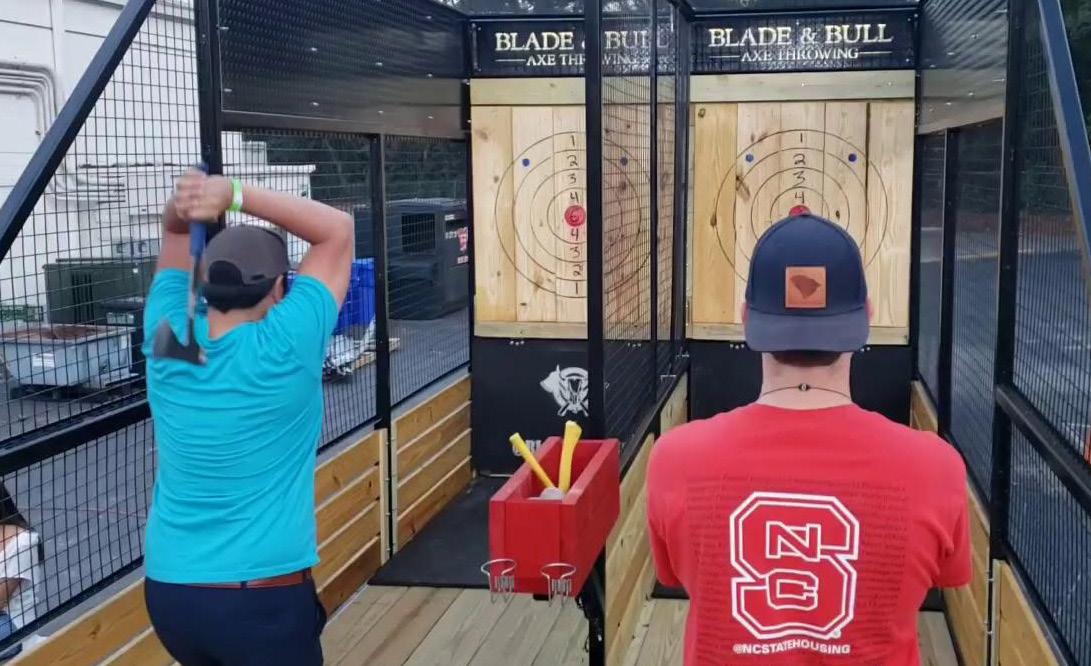
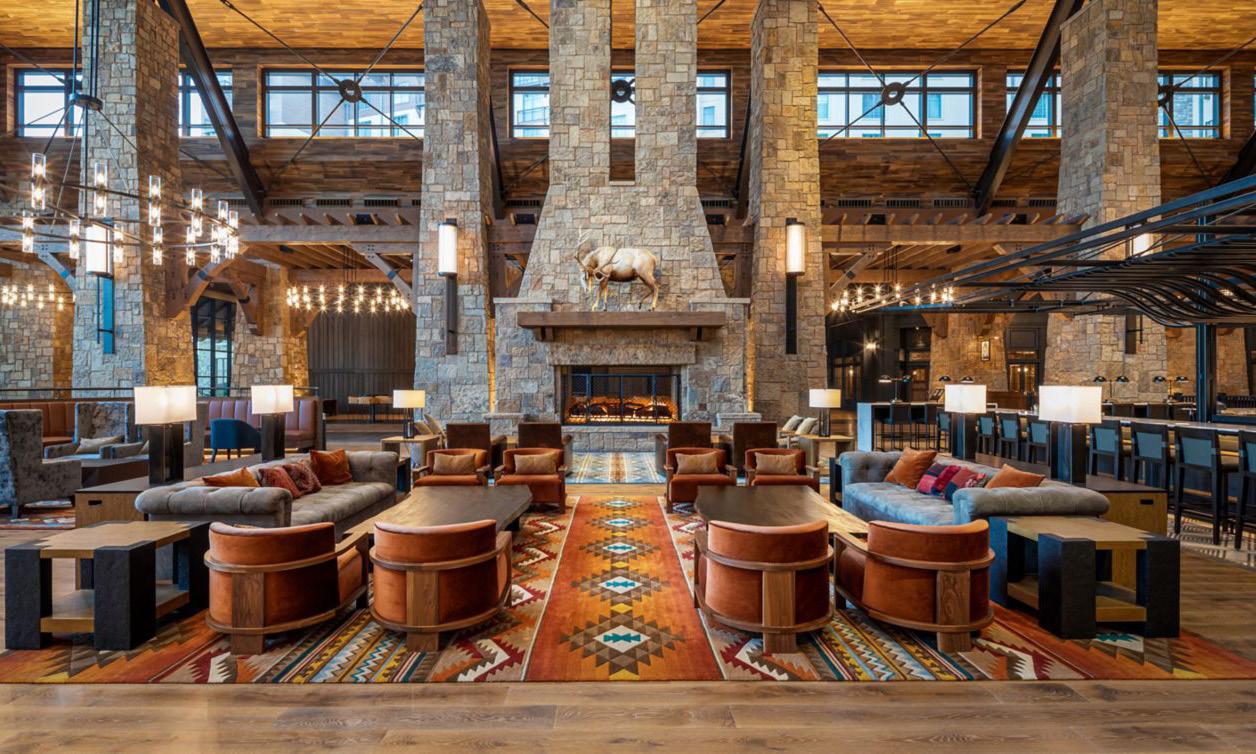
The Opening Party will be axe-tremely fun with tailgate games, including cornhole, Giant Jenga, and rock climbing!
convention group rate. After Aug. 21, group room rates are based on availability. To reserve your hotel, use the hotel reservation link listed on your registration confirmation page after registering for AFSA43.
Denver really is a mile high, but most people don’t even notice the altitude difference. The air is just thinner and drier. In fact, many people with respiratory problems move to Denver for the benefits of the dry air. Follow these tips to feel great while attending AFSA43: drink water, eat foods high in potassium, watch your physical activity, pack for the sun, monitor your alcohol intake, and dress in layers. For more details on staying happy and healthy in the Denver area, visit www.denver.org/about-denver/resources/high-altitude-tips/.
AGF Manufacturing, Inc.
American BackFlow Products Co.
American Fire Sprinkler Association
Ames, a Watts Brand
ARGCO
Armstrong Pumps, Inc.
ASC Engineered Solutions
BAVCO
BlazeMaster® Fire Sprinkler Systems
Borusan Pipe
Brecco Water Solutions
Brooks Equipment Company, Inc.
BuildingReports
Bull Moose Tube Company
C-Aire Compressors
Century Fire Protection, LLC
Cintas Corporation
Clarke Fire Protection Products, Inc.
Cla-Val Company
Consolidated Fire Protection
Core & Main Fire Protection
Croker
Diamondback Fire Protection
Driven Fire Consultants
DUYAR
EasyFlex, Inc.
Eaton TOLCO
Engineered Corrosion Solutions
Essential
Exact Pipe Tools, Inc.
The Embers Lodge Bar is the perfect gathering place, featuring small plates, Colorado-inspired cocktails, and panoramic views.
The regular registration deadline is Aug. 16, 2024. Late registration dates, with higher fees, are Aug. 16-Sept. 12, 2024. After Sept. 12, registrations must be made onsite in Denver at the onsite rate. View more details and register online at www.firesprinkler.org/afsa43. n
EDITOR’S NOTE: AFSA is made aware of third-party vendors soliciting AFSA exhibitors and attendees posing as our housing vendor or attendee list distributor. These companies mislead you into thinking they are working on our behalf and are not endorsed by or affiliated with AFSA or its show. Entering into financial agreements with such companies can have costly consequences. Please note attendee lists are distributed onsite. To receive full AFSA hotel benefits, book directly with the hotel using the link found on your reservation confirmation page.
(as of press time)
Fayette Pipe Company
Ferguson Fire & Fabrication
FireFlex Systems, Inc.
Fire Tech Productions
Firetrol
Forge
Gast Manufacturing, Inc.
General Air Products Inc.
Globe Pipe Hanger Products, Inc.
Guardian Fire Equipment, Inc.
HRS Systems, Inc.
Hydratec, Inc.
Inspect Point
JG Innovations, Inc.
Job Gmbh
Johnson Controls
Kennedy Valve
Loos & Company, Inc.
Metraflex
Milwaukee Valve Company, LLC
NCW
Noble Company
Nucor Tubular Products – Trinity
nVent CADDY
Pace Machinery Group, Inc.
Patterson Pump Company
Peerless Pump Company
Permabond Engineering Adhesives
PHD Manufacturing, Inc.
Potter Electric Signal Company
Potter Roemer
Pumptec, Inc.
Quaker Houghton
Reed Manufacturing Company
Reliable Automatic Sprinkler Co., Inc.
Safe Signal
Sammy/ITW
Senju Fire Protection Corp.
ServiceTrade, Inc
Sigma Piping Products
Snap Drill AS
Spears Manufacturing Company
SPP Pumps, Inc.
Talco Fire Systems
Texas Manufacturing Company
The Hose Monster Company
TOPQuote
Tornatech, Inc.
UNITED Fire Systems
Victaulic
Viking Group, Inc.
Wheatland Tube Company
Wheeler-Rex, Rex International USA, Inc.
Wilson and Cousins
Winsupply, Inc.
Wright
Zurn Industries, LLC
ERIC ANDRESEN, WBITM | AMERICAN FIRE SPRINKLER ASSOCIATION
One of the largest misconceptions the fire sprinkler industry battles against is the general public’s misunderstanding of how sprinklers and sprinkler systems operate. We have all seen movies or TV shows where the way the sprinkler system operates is vastly misrepresented. For example, a student doesn’t want to take a test, so they pull the fire alarm, causing the sprinkler system to activate throughout the school. Fortunately, that is not how most sprinkler systems work. Hollywood realizes that normal sprinkler system operations are not nearly as exciting, so they use their creative license to make most of the systems we see in the movies defy the laws of basic physics and thermodynamics. This can be seen in the way they depict the operation of the system and sprinklers themselves. Since the public is usually only exposed to the Hollywood rendition of sprinkler system operations, they do not understand how most sprinkler systems work. This leads to them being overly concerned about the activation of the systems due to their lack of understanding and education about how sprinklers and sprinkler systems function. For all the misconceptions Hollywood gives, however, they do a fantastic job of illustrating how a deluge system works, even if they still miss some of the finer points of the operation.
Deluge systems, sometimes called Hollywood systems, utilize a deluge valve and open sprinklers or nozzles throughout the protection area. These act just like Hollywood depicts in the movies and TV shows where all the sprinklers or nozzles

Not all sprinklers activate in the event of a fire.
discharge at the same time. These systems have a variety of uses, ranging from fire control to exposure protection and explosion prevention. The deluge valve is designed to allow rapid delivery of large volumes of water or a water/foam solution to the protected area in response to fire detection. Unlike traditional sprinkler systems, where individual sprinkler activates independently, deluge systems operate when a fire detection or a sensing line detects a fire within the protected area.
From a design perspective, the design of a deluge system is fairly similar to that of any other type of sprinkler system. One of the main differences between a deluge system design and other types of sprinkler systems is the number of sprinklers designed to flow and used to calculate the hydraulic demand of the system. For most sprinkler systems, the design calculates the number of sprinklers that are expected to operate on the system based on a calcula-
tion that accounts for the spacing of the sprinklers and the size of the most hydraulically demanding design area being used for system calculations or within a set design size parameter (i.e., room design method or a prescriptive number of sprinklers at a set end head pressure). For deluge systems, the number of sprinklers or nozzles calculated is the total number installed in the system, as all are expected to discharge water simultaneously, and the minimum end head pressure must be met. Another main difference is that multiple deluge systems may be designed to operate simultaneously. This is different from other sprinkler systems as they are only designed to have a single sprinkler system operate. If multiple deluge systems are expected to operate simultaneously, this must be accounted for in the water supply demand calculations. Due to the nature of what these systems are generally protecting and due to so many nozzles or sprinklers flowing simultaneously, a substantial water supply is generally required.
Deluge valves are not just limited to use on deluge sprinkler systems. They are also utilized on a few other types of systems. All preaction sprinkler systems utilize a deluge valve as the base valve. The main difference between preaction systems and deluge systems is they utilize closed sprinklers instead of open sprinklers or nozzles. Preaction systems also have more happening on the trim of the valve or with the releasing panel as supervisory air is utilized to monitor the integrity of the system and can be used as a releasing interlock. Deluge valves can also be found at the base of semi-automatic dry standpipe systems. In semiautomatic dry standpipe systems, the water supply can meet the flow and pressure demands of the standpipe system. The bulk of the standpipe system is kept dry, and the opening of a hose valve on the system will not result in water being released or flowing from the system unless the deluge valve has been activated. A manual pull station next to the hose valve also needs to be pulled to activate the deluge valve. This acts as the releasing mechanism for the deluge valve, allowing water to flow throughout the piping network of the standpipe system.
Proper inspection, testing, and maintenance of deluge valves is important, as with any other type of system valve found in our water-based fire protection systems. However, the nature of what these valves are protecting, coupled with the fact that these systems are significantly less common than the other types of system control valves, makes these valves more intimidating to work on. Deluge valves utilize a variety of means for releasing the valve. An electronic solenoid controlled by a releasing panel is a quite common tripping method and can be used with a very large variety of detection means. Other releasing options include wet or dry pilot sprinkler lines. All these releasing styles need to be tested. The deluge valve needs to be tested as well by performing a trip test of the valve. This trip test will be

conducted twice. One time we will use the normal releasing operations; the second time we will utilize the emergency manual release. The deluge valve ideally will be allowed to trip, and water will flow into the protected space. Depending on the nature of the operation being protected, this is not always possible. If water cannot flow into the space, a partial trip test is performed, and water flows into the space at the next shutdown of operations. This delay in discharging water within the space cannot be greater than three years since the last full water discharge. Discharging water into the protected space is critical for ensuring the spray patterns are not impeded and provide adequate coverage of the protected space. During any years that full discharge is not possible, the nozzles should be visually checked for alignment. Pressures near the riser and at the most remote sprinkler or nozzle also need to be recorded to ensure that proper pressures are being maintained throughout the system, which helps verify that it continues to operate as designed. These pressures are compared against the original hydraulic design pressures. Additionally, if multiple systems are expected to operate simultaneously, they need to be tested operating simultaneously to also test the adequacy of the water supply.
Deluge valves play a vital role in multiple fire protection systems, providing rapid and comprehensive suppression capabilities to safeguard lives, property, and critical assets from the destructive perils of fires. By understanding the functionalities, applications, design considerations, and maintenance procedures associated with deluge valves, engineers, building owners, facility managers, Authorities Having Jurisdiction (AHJs), and sprinkler contractors can effectively work together to ensure these critical systems are properly installed and maintained. n
ABOUT THE AUTHOR: Eric Andresen, WBITM, is the technical training specialist for the American Fire Sprinkler Association (AFSA). He has experience with risk engineering applied to fire protection system analysis and the inspection, testing, and maintenance of fire protection systems for the insurance industry. Andresen has experience in the hands-on training of water-based fire protection systems for risk engineers and facilities management staff. Andresen received his Bachelor of Science degree in fire protection and safety engineering technology from Oklahoma State University.
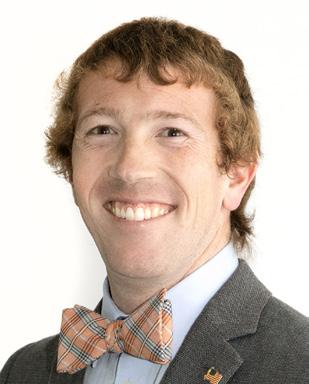
“ Her work ethic is impeccable! I truly wish we could clone her,” Paulene Norwood, executive director of the American Fire Sprinkler Association’s (AFSA) Sacramento Valley Chapter, compliments Holly Gray-Salmon’s hard work and passion within the fire protection industry. As the award winner for AFSA’s NextGen Initiative’s (NGI) 2024 Young Professional of the Year (YPY), Gray-Salmon continues to build her reputation within the industry and at family-owned Foothill Fire Protection, Inc. in Loomis, Calif., where she serves as vice president of finance.
The fire protection industry runs through the Gray family bloodline, and Gray-Salmon’s success was inevitable. Her parents, Bill and Carrie Gray, started Foothill Fire Protection, Inc. 30 years ago, and her father has been active in AFSA for 20 years. Gray-Salmon had her heart set on other aspirations versus the family business. She always wanted to be a horse trainer or an esthetician with her own salon, while her brother, Dillon Gray, went into the family business. However, all bets were off once GraySalmon gained responsibility within Foothill Fire Protection. Whether booking jobs or purchasing, she found it rewarding. “It became meant to be. It wasn’t the path I was going to pick, but it was the path I was meant to be on,” says Gray-Salmon. “For me, not picking this career, I’m exactly where I’m supposed to be, and I’m loving it!”
As vice president of finance, Gray-Salmon focuses on company success and expansion. “I love numbers, researching, and analyzing. I’ve also always liked purchasing because I love to negotiate.” With her eye for processes and what it takes for the company to succeed, Gray-Salmon takes the initiative outside her financing role to help anywhere she can. “When you’re a family-owned business, your role is not within a certain box,” she explains. “From starting at the bottom and working my way up, I’ve seen all aspects of our industry and this company.” Gray-Salmon can sit in financial meetings for a branch and talk about jobs. Due to her knowledge of the construction side and its processes, she can advise and provide insight to others. “I think I have an advantage growing up in the business. I not only know the finance side of the business but also our industry, which helps.”

With such an involved and driven family, Gray-Salmon has developed a core value of “family first,” and she aims to create this atmosphere in the workplace. “We also consider this with our employees, accepting them as part of a family. When we’re providing growth for that many people, we’re pushing hard as a company to have as many opportunities for everyone as possible.”
In the past, three of her brothers’ friends from elementary school had a role in management within Foothill Fire Protection. GraySalmon practically grew up with them, and their careers took off in the family business. Gray-Salmon also met her husband, Ray Salmon, in the industry while working summers for her dad. He is still with Foothill Fire Protection, and his childhood friend runs its construction division in Rocklin. “The camaraderie is why I’m here. It’s the people.” Gray-Salmon continues with a smile. “We work well together, it’s a good environment, we’re productive, support one another, and we’re on a similar path. It’s been a lot of fun, and I’m very grateful!”
When asked about the advice Gray-Salmon has for other young professionals in the industry, she said her biggest tip is to give back. Gray-Salmon has found ways to give back to her

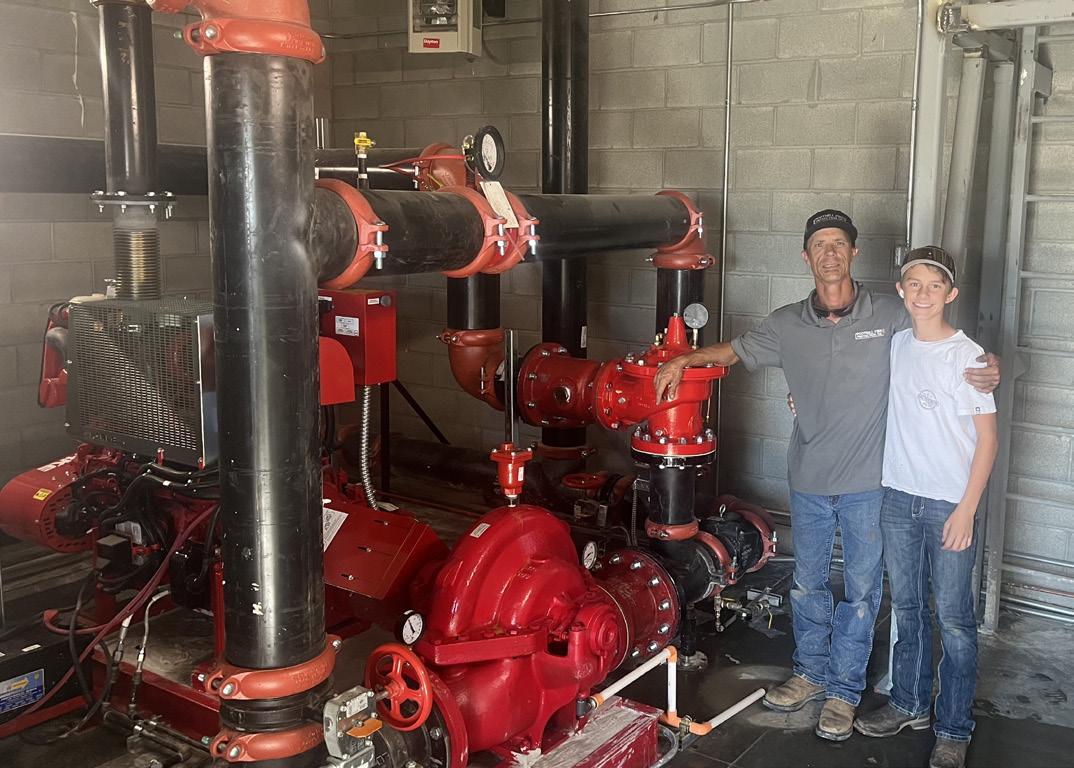
community and the industry. Two years ago, she jumped in as treasurer of AFSA’s Sacramento Valley Chapter and recently became chair. “I enjoy it. I enjoy volunteering; it feels good. I like to meet other people outside of Foothill Fire.” Gray-Salmon admits, “In the finance world, you don’t get to do this as much because you’re not working directly with customers, so I like this a lot.”
The Sacramento Valley Chapter held its 12th tradeshow this year, an event held in the first quarter of each year that offers expert insight, networking opportunities, and showcasing industry vendors. Gray-Salmon has volunteered for this event since its inception and has witnessed the growth each year. “I enjoy working with Paulene and the board members. It’s a ton of work but so fun,” Gray-Salmon says. “You see people you don’t see every day and experience everyone coming together as a community.”
To uphold her passion for people and this industry, GraySalmon makes it a priority to recharge by attending events, luncheons, networking opportunities, and more. She and her family are very active in the California American Fire Sprinkler Apprenticeship Program (CAFSA), with her father serving as chair. By staying involved, Gray-Salmon allows herself to see what others are up to. She stays in the know by exploring what others are working on or finds herself discussing similar challenges others are facing locally or in the industry. “People should take advantage of that,” she comments. “It’s important not to get sucked into the day-to-day. Attending an AFSA lunch, chapter meeting, or convention is reenergizing and refills your motivation.”
Gray-Salmon advocates helping others and firmly believes in giving back to those aspiring to be successful in the fire protection industry. For example, she notes that people attend AFSA conventions to network and acquire knowledge. She knows she is giving back her expertise and experiences to convention attendees, just as others have shared their skills and stories with her.
The Gray family has supported local 4-H programs and Future Farmers of America (FFA) students through an auction for almost 12 years. The family has purchased a steer from a nine-year-old girl at the auction and has bought her steer every year since. She is 18 this year and is now going away to college. “That’s reinvesting in someone
to help her with life skills and her future,” Gray-Salmon says. “She learns all these great tools you can have as a child to prep her for life.” The Gray family has done this with several other students. They’ve bought another student’s pig for years, and he is applying for a job at Foothill Fire Protection this year. “I’m excited about it; it feels like I’m adding to my family. We’ve branched out to that youth, and I love that; it’s my favorite part.”
Gray-Salmon will be the ninth winner of the YPY award, which recognizes the outstanding talent and achievements of newcomers in the fire sprinkler industry. These professionals aged 40 and under are activists and innovators and are praised for their passion and sense of community. The award seeks to promote the emergence of new talented professionals and inspire companies to invest even more in the development and excellence of the profession.
“Holly is an intricate part of the accomplishment of our tradeshow every year as she volunteers her time unselfishly to be sure everything runs smoothly,” comments Norwood. “If I ask Holly to help with something at the show, it is always ‘absolutely’ and is taken care of in an efficient manner.”
Gray-Salmon and her family have attended AFSA’s annual convention for many years. Her first AFSA convention was in 2008, and this year, she’s excited to bring her whole family to AFSA43 in Denver.
‘Every time Holly’s name came up, it was followed with endless praise,” comments NextGen Chair Katie Meehan, director of marketing for VSC Fire & Security, Richmond, Va. “Though I haven’t had the pleasure of meeting Holly personally, it was evident from her reputation that she is a force of positivity and energy. It seems clear that Holly has made a serious mark on the industry, which is an accomplishment in and of itself—but particularly admirable given her role as a young professional. She has much to be proud of!”
The YPY Award will be presented to Gray-Salmon during the General Session at AFSA43: Convention, Exhibition, & Apprentice Competition. Learn more and register to attend at www.firesprinkler.org/afsa43. n
BENJAMIN DITCH & WESTON C. BAKER, JR. | FM GLOBAL
Many of us nowadays conduct our shopping online as studies show that more than 75% of consumers in the United States now purchase items via the web on a routine basis. To keep up with this trend, today’s warehousing has revolutionized its material handling processes allowing consumers to receive their purchases as quickly as the very next day. Helping industries keep up with fast and efficient product delivery is computer-based automatic storage and retrieval systems, or “ASRS” for short. These systems achieve their efficiency by having individual products readily accessible and transferrable to a picking station for selection, packaging, and shipment all within a matter of minutes.
The ASRS market is in constant flux. There are now many different types of ASRS configurations available for quick and efficient processing of client orders. While these systems may differ from each other in many ways, all rely on automated guided vehicles or robots to retrieve products from a densely packed storage area. Power sources for the robots can vary as well depending on the type of system being employed.
While ASRS offer many benefits to customers, they can also present unique challenges to fire protection.The main challenge to fire protection is the presence of open-top containers, which are prevalent within most ASRS. Even worse, most open-top containers are made from plastic, which has a higher heat release rate than cardboard, nor does it absorb water.
Some ASRS storage arrangements can create a challenge to the fire service community in their efforts to achieve extinguishment of a fire originating within the ASRS system. With the substantial reduction in the aisle width, or in some cases the elimination of them altogether, access to the fire area for manual intervention is no longer a given. This can put a strain on the ability of the fire services to reach and extinguish a fire before a facility’s water supply has been exhausted.
Any ASRS fire poses the potential for significant financial losses. To keep up with the changing hazards that ASRS technologies can pose, the Research Division at FM Global has been analyzing the challenges to fire protection created by various ASRS to determine how to adequately address these multiple challenges for over a decade.

High precision construction and tightly packed storage areas hamper fire service access and highlight the need for automatic protection solutions that can achieve final extinguishment. The historic reliance on the fire service to locate and extinguish lingering fires that may be hiding in the storage area is no longer practical in many cases. Reignition is always a real possibility. While the protection strategies are different for each type of ASRS, the general approach to achieve extinguishment is similar, including 1) sprinkler systems designed to operate in the early stages of the fire, 2) passive protection in the form of combustible breaks or other means to limit fire spread, and 3) operational considerations to minimize obstructions to the fire protection.
As one of the earlier technologies available, FM Global started to evaluate horizontal loading type ASRS back in 2010. The results showed that the enhanced storage density, when compared to traditional racking systems, increased the fire hazard. Interestingly, the impact was a combination of the close spacing of the storage containers and the design of the rack structure.
Full-scale fire testing demonstrated in-rack sprinkler protection was necessary for storage of open top plastic containers at heights over 10 ft (3 m). Through a combination of experiments and numerical modeling, a modular fire protection approach was
developed using in-rack sprinklers in both the longitudinal and transverse flues to avoid simultaneous operation of ceiling and in-rack sprinklers while achieving adequate fire control. This approach simplified the protection design by eliminating the need for hydraulic balancing and accounting for simultaneous flow from each system. The resulting water flow requirements are within typical supplies available at commercial sites, i.e., < 2,000 gpm (7,600 L/min) for 60 minutes. Even with this horizontal in-rack sprinkler arrangement, water collection by the containers as well as the presence of limited transverse flue space widths led to a 15 ft (4.6 m) limitation between the vertical increments of in-rack sprinklers.
A different approach was needed to achieve extinguishment in top loading ASRS. These storage systems consist of tightly spaced stacks of containers and do not allow for the use of in-rack sprinklers. Early large-scale fire testing showed that ceiling-level sprinkler protection could suppress the initial fire, while extinguishment required additional manual firefighting strategies. Reducing the ceiling height to 30 ft (9.1 m) or less demonstrated a potential means of achieving extinguishment by the ceiling sprinkler system when the storage consisted of solid-walled plastic containers. However, some storage applications require the use of vented containers. In this case, large-scale fire testing demonstrated that non-combustible breaks were needed to confine the fire to a predetermined area and prevent further horizontal flame spread. While effective, the strategies for top-loading ASRS mainly targeted improving the performance of ceiling-level sprinkler protection, but still allow damaging fires to occur. As a result, FM Global Research recently employed a new strategy aimed at risk reduction by addressing the fire hazard, instead of the fire protection. The new approach shifts to the use of non-flame-propagating containers, whose performance can be evaluated experimentally. The experimental methodology involves intermediate-scale testing to replicate the fire conditions that exist within the storage system without the added cost and complexity of large-scale testing. Details of the evaluation can be found in the new FM Approval Standard 4994, Examination Standard for Non-Flame-Propagating Containers Used in Top-Loading Automatic Storage and Retrieval Systems (TL-ASRS), which is expected to be released in 2024. Opportunities are also being explored to extend this approach to other ASRS technologies.
The results obtained from the extensive testing conducted by FM Global Research provide the basis for recommendations offered in the FM Global Property Loss Prevention Data Sheet 8-34, Automatic Storage and Retrieval Systems (i.e., Data Sheet 8-34), which is available free of charge on the FM Global website (FMGlobal.com). In addition to this data sheet, training resources for pre-incident planning involving ASRS are available from FM Global at the website keepthesprinklerson.com.
While Data Sheet 8-34 is large, a flowchart is provided at the beginning of the document to help the user navigate to the sections that would apply to the ASRS being evaluated.
For vertically enclosed ASRS, the recommendations in Data Sheet 8-34 aim to provide a protection scheme that will keep a fire
originating within the storage unit from escaping through the exterior wall of the ASRS unit, thus minimizing damage to the occupancy adjacent to the ASRS. This protection scheme utilizes a significant flow from sprinklers installed at ceiling-level within the storage unit. Additional sprinklers may be recommended along the walls of the unit, depending on the height of the unit.
For top-loading ASRS with plastic open-top containers, the recommendations aim to (1) suppress the fire using ceiling-level sprinklers, as well as (2) offer additional steps through pre-planning to aid the local fire services with achieving extinguishment. Using FM Approved non-flame propagating containers, as opposed to plastic containers, allows the end user to (1) significantly reduce the fire hazard, (2) reduce the recommended ceiling sprinkler system designs, and (3) eliminate the concern for manual intervention to achieve extinguishment. Recently, recommendations have been added to FM Global Property Loss Prevent Data Sheet 7-29, Ignitable Liquid Storage in Portable Containers, to address consumer-based ignitable liquids in top-loading ASRS.
For horizontal-loading ASRS, the recommendations focus on the use of ceiling and in-rack sprinklers. The in-rack sprinkler arrangement is designed to prevent the fire from growing vertically past the first level of in-rack sprinklers it encounters. This not only helps reduce damage during the fire event, but also (1) eliminates the need to hydraulically balance the in-rack and ceiling sprinkler systems, and (2) reduces the challenge of achieving extinguishment by the local fire services. Pre-planning with the local fire services is also emphasized with this type of ASRS due to the limited aisle widths and the potential higher storage heights employed. Recommendations have also been recently added to FM Global Data Sheet 7-29 to address consumer-based ignitable liquids in horizontal-loading ASRS.
The recommendations in FM Global Data Sheet 8-34 are for design purposes. As a result, FM Global Property Loss Prevention Data Sheet 2-0, Installation of Automatic Sprinklers, is used to determine the recommendations offered for sprinkler installation.
ASRS are an integral part of keeping businesses competitive in this fast-paced world we live in, where delivery time of products to end users is critical. FM Global strives to keep pace with emerging ASRS technologies hitting the market, evaluate the challenges they create to fire protection, and develop protection solutions for Data Sheet 8-34 that can help reduce the impact of property damage and business interruption for the end user should a fire incident occur. n
ABOUT THE AUTHORS: Benjamin Ditch is a principle research engineer at FM Global and is the technical team leader of the large-scale fires team with 24 years of experience in fire hazard analysis and specialty fire protection system design. In addition to conducting research on lithium-ion batteries and other emerging technologies, he is also a committee member on NFPA 855 and UL 9540.
Wes Baker is a senior engineering technical specialist in the chief engineers group at FM Global. He is a member of the Society of Fire Protection Engineers (SFPE) and an NFPA member serving on both the NFPA 13 Installation and NFPA 13 Discharge committees. He has been with FM Global for 39 years and is currently responsible for data sheets related to the protection of storage, as well as the installation guidelines for sprinklers that are used for storage protection.
The American Fire Sprinkler Association (AFSA) is widely known for its training courses and workshops across the fire sprinkler industry. Are you looking for a better way to train your apprentices?
AFSA has the solution! Going strong for its second year, AFSA offers a virtual instruction program (VIP) to p rovide the classroom education to support your apprentices. This program had a notable first year and accommodates employers’ and employees’ busy schedules.
“A year plus into VIP, our students are gaining confidence in their knowledge and skills,” says AFSA’s Director of Program Development & Special Projects Victoria B. Valentine, P.E., FSFPE. “Watching them grow and engage with the instructors, material, and activities is exciting. We need more people installing systems, and VIP is helping to create more fitters.”
With AFSA’s partnership with the National Center for Construction Education and Research (NCCER), the curriculum texts—the Sprinkler Fitting books—have been updated and are now in their fourth edition. This version utilizes NFPA 13, Standard for the Installation of Sprinkler Systems. The 2019 edition correlates to Level 1 and Level 2. The 2022 edition correlates to Level 3 and Level 4. Levels 1-4 are each provided with 10 months of instructional education content to pair with the On-The-Job-Learning (OJL) conducted by the employer. The education content includes the Sprinkler Fitting textbooks,

“USING THIS PROGRAM HELPS ME
two live monthly sessions, performance tasks to reinforce the modules, self-study components, and assessments.
“Using this program helps me learn more about the trade to further improve myself in the field,” answered a recent VIP participant with Jarrett Fire Protection, Nashville, Tenn., when asked about their experience. “The most valuable thing to me about VIP is having someone to walk us through and to ask questions when needed or if I don’t fully understand something. I would definitely use this resource again.”
Level 1 registration dates and deadlines for the fall 2024 class are as follows:
• Aug. 5: Live sessions begin!
• Sept. 6: Late registration ends.
A new Level 2 class will also begin in the fall of 2024. The registration dates and deadlines are as follows:
• Aug. 23: Early-bird registration ends – biggest discount!
• Aug. 24-Sept. 27: Regular registration period.
• Sep. 28-Nov. 4: Late registration period.
• Oct. 8: Live sessions begin!
Level 3 VIP will begin in early 2025 and dates will be published in fall 2024. Level 4 will be determined at a later date.
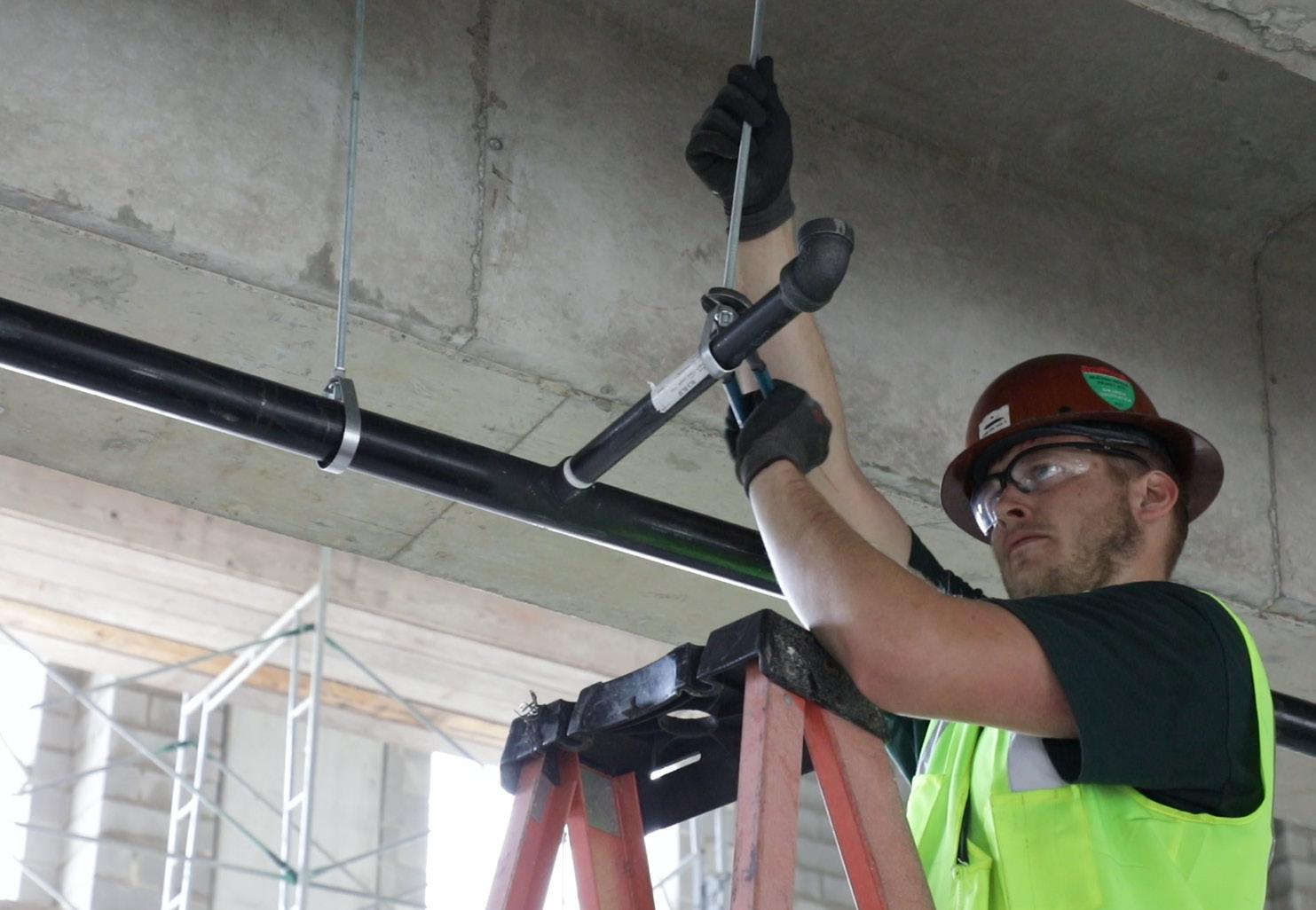
“I would highly recommend [VIP],” comments another employee at Jarrett Fire Protection. “I’m looking forward to levels 3 and 4 to see what they cover about the [fire] sprinkler system industry!”
Participants are required to attend the live interactive sessions. AFSA staff and industry experts will lead each session, which is two hours long and allows time for a group discussion. The mandatory sessions will be held twice each scheduled day to accommodate different time zones. After registering, a calendar with specific session dates and details is provided.
Performance tasks correspond with each lesson to reinforce what’s being taught. The supervisor (employer) assigned during VIP registration ensures the completion of these tasks, which must be completed to advance to the next level. The self-study portion allows the apprentice to review relevant sections related to the teachings. Add-on materials such as videos and articles are also provided. Each module includes questions to test the participants’ knowledge and ensure they grasp key concepts.
Another employee from Jarrett Fire Protection said they benefited greatly from the program. “The things that I was struggling to learn have gotten easier because of this training. They teach you a lot of good information that sometimes you can miss out on or just not really understand. I look forward to learning more.”
Assessments are also conducted through the learning management system and virtually proctored. For Level 1 and Level 2, there will be one exam per module. For Levels 3 and 4, the number of assessments will be reduced from those corresponding to the third edition of the textbooks, but for subjects that warrant it, there may be more than one exam per module.
Mason Castle with Castle Sprinkler & Alarm, College Park, Md., commented, “[It’s a] great experience so far. While we have only covered construction basics so far, I feel everything has been taught effectively.”
“As word continues to spread, we’re seeing new companies enroll in VIP with every new class. It’s exciting to watch it grow,” comments AFSA Vice President of Education Services Leslie Clounts. “I hope every member will leverage this additional apprenticeship support provided by AFSA.”
To learn more about apprentice training, visit www. firesprinkler.org/sprinkler-apprentice-training/. For any questions or to learn more about AFSA’s education and training opportunities, email training@firesprinkler.org or visit www.firesprinkler.org/education. n


The AGF RiserPACK Model 8511Z is a 2½” floor control assembly. It features a flow switch, pressure gauge with test valve, hose test, TESTanDRAIN valve with pressure relief valve and drain trim, optional stainless steel drain line, and a pressure reducing valve with internal check valve.
If you were asked to define special hazards or systems, what would your answer be? I suspect we each have an opinion on what constitutes special. Oxford Languages defines special as “better, greater, or otherwise different from what is usual.” In the context of fire protection, I think we would all agree that wet pipe systems are considered the usual. Everything else, therefore, must be special. Let’s work with that and look at the escalating levels of “special” fire sprinkler systems.
Two things occur when water freezes— it expands by approximately 9% (the only non-metal substance known to have this property) and it stops moving. Stated another way, expanding water breaks things, and ice impairs the flow of water in piping. The need to address these issues in fire sprinkler systems was recognized in the latter part of the 19th century when the first dry pipe valves were developed. Interestingly, early dry valves were mechanical style dry valves. Large and complex, these early dry valves were prone to failure and were soon replaced with much simpler differential style valves that remained the industry standard for many decades. Today, however, all dry pipe valves are not the same. Modern mechanical dry valves are now available and were officially defined in the 2019 edition of NFPA 13 (3.3.235.4.2). Both style valves— differential and mechanical—solve the issues that arise in freezing environments, but each offers unique features and benefits that must be understood before selecting a dry pipe valve, particularly for large capacity dry pipe systems. Selecting the wrong dry pipe valve can ruin your day. (See Figure 1.)
History shows that early fire protection was often accomplished manually using water discharged from multiple open orifices or devices placed over the protected area. While possibly effective (provided someone opened the valve!), the indiscriminate application of water from these early deluge systems over areas not engaged in the fire necessitated large water supplies and resulted in water damage beyond the actual fire area. The development of reliable automatic fire sprinklers that operate directly in response to and in the immediate area of the fire changed all that, resulting in common (or usual) wet and (eventually) dry pipe sprinkler systems.
I suspect the history from there goes like this. At some point in the early 20th century, a need was identified for fire protection systems specifically designed to do what those very early deluge systems did, namely, discharge water from multiple devices (nozzles, monitors, open sprinklers) all at once and do this automatically in response to high-challenge fires. A particular style of water control valve was needed, and unlike the differential style dry pipe valves available at the time, this valve could not rely on air pressure in the piping system to hold it closed (remember, open discharge devices).
The solution? Modern day deluge valves: mechanical valves that rely on a supplemental releasing system acting in response to a fire. Today, fire detection using electrical devices is the most common means of activating deluge valves, but it is important to remember that listed and approved hydraulic (wet pilot) and pneumatic (dry pilot)

mechanical style dry pipe valves are deluge valves trimmed to make them operate as dry pipe valves. In essence, the loss of system air or nitrogen pressure becomes the detection event (Reliable DDX-LP).
detection systems are available. Pilot line detection is less complex than electrical detection, and it offers the benefit of bringing additional work directly to the fire sprinkler contractor.
Let’s discuss preaction properly by first understanding there is no such thing as a preaction valve. (NFPA 25, take note.) Preaction systems utilize mechanical deluge valves with the same range of detection and releasing systems as deluge systems; the difference is that instead of open discharge devices, preaction systems use closed automatic sprinklers. In this regard, they can be considered close cousins to deluge
systems, and hats off to the lady or gentlemen who came up with this idea.
“Dump the wet stuff on the red stuff.” We use this saying frequently to describe, in simple terms, how sprinkler systems operate. When a sprinkler operates on a wet pipe system, water is immediately discharged. On a dry pipe system, there will be a delay in water discharge, but water is on the way and will flow typically within one minute. What about the real possibility, however, of an accidental opening of a fire sprinkler, valve, or pipe on a wet or dry system? The system cannot distinguish between a desired opening in the system (i.e., a sprinkler) and a nondesired opening in the system, perhaps due to mechanical damage or vandalism. Water will be discharged into the protected area in either case and while this is not ideal, the accidental release of water can be tolerated. What about areas, however, that are identified as “water sensitive,” such as data centers, control rooms, and museums? Wet pipe and dry pipe systems give us no protection against the accidental release of water.
Water control for these areas must be done using a system that gives us two critical pieces of information. First, is the piping network capable of holding water pressure when needed? This assurance is provided by using air or nitrogen pressure in the system and continually monitoring the pressure with a pressure switch. In the event of a loss of pneumatic pressure— both in single and double interlock preaction systems—a low pressure signal is generated to let us know that there is an opening in the system and that if water is put into the system, it will likely come out of the system somewhere.
The second critical piece of informa tion afforded by preaction systems is advance notification that water release is imminent unless someone responds to an early indication of a fire. This notification is provided by a detection system that is intentionally designed to be more sensitive than the fire sprinklers on the system. This early warning provides an opportunity for personnel to investigate and (where safe!) possibly “preact” to prevent the discharge of water into the water sensitive area. (An
example might be the proper use of a fire extinguisher on a small wastebasket fire.) One common question is, “How much time do I have between the detection event and the operation of the fire sprinklers?” The tongue-in-cheek answer is that it depends on how big the fire is. A small fire detected very early (perhaps with an air aspirating smoke
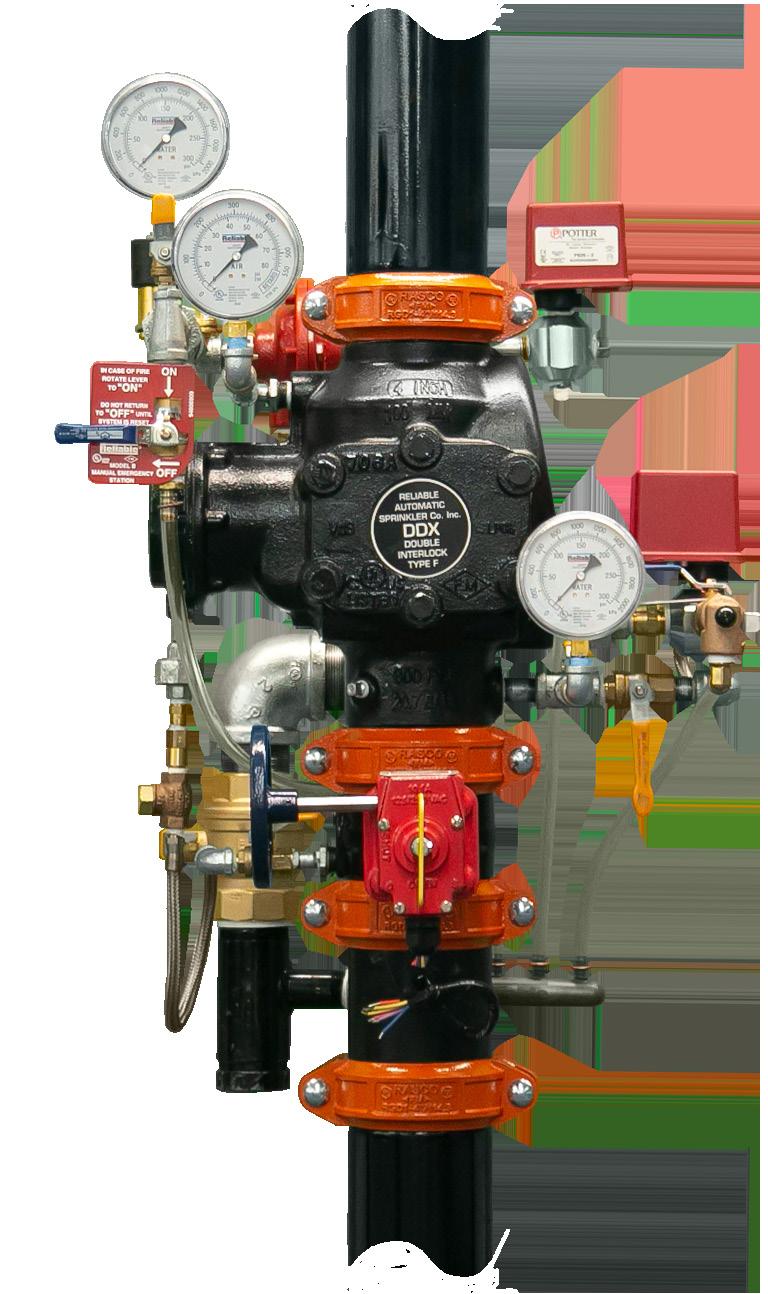

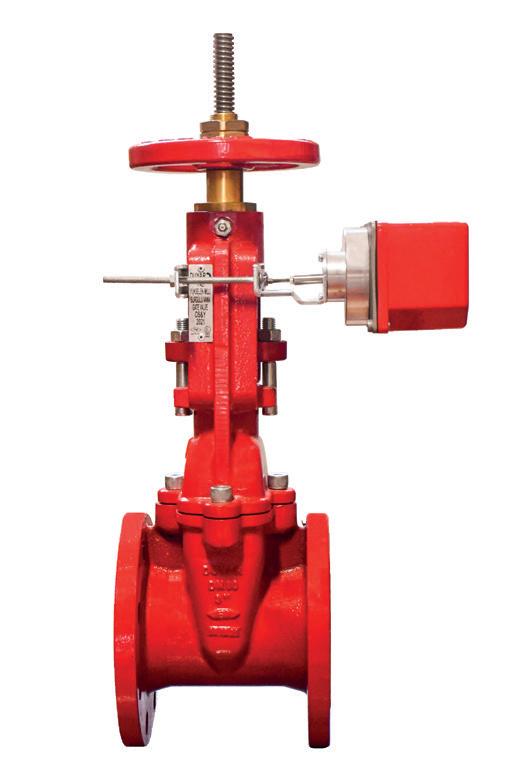
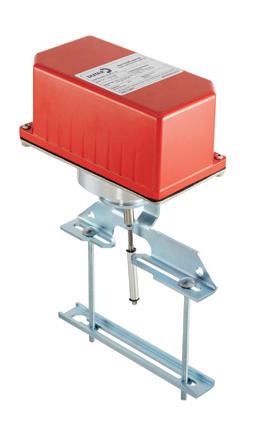
piping system, and we have discussed why this is important. Both types of systems also use a detection system that is more sensitive than the sprinklers on the system. On a single interlock system, a single event—activation of the detection system—releases water through the deluge valve into the piping network in advance of sprinklers operating, essentially converting the single interlock system into a wet pipe system. Single interlock systems could be described as “wet systems in waiting.” For this reason, single interlock systems
do not suffer all the design adjustments required for a double interlock system. Why must we make adjustments to double interlock systems? Because they are “dry systems in waiting.”
We know that dry pipe systems rely on the release of air or nitrogen pressure in the system to release the water control valve. By placing a detection system in front of the pneumatic pressure release, we have now created a system that requires the co-existence of two events (hence “double”) to release the water control valve. Only when there is an
active detection event coupled with loss of air or nitrogen will the deluge valve on a double interlock system open. It is important to recognize that the intended sequence of operation for double interlock systems is detection first and loss of pneumatic pressure second. It is equally important to recognize that these events can occur in the opposite order. An unattended loss of air or nitrogen pressure followed by a detection signal will result in the release of the deluge valve, water flow into the system, and (possibly) water discharge out of whatever opening(s) caused the loss of pneumatic pressure. Building owners should be regularly cautioned to NEVER ignore a low air supervisory signal!

Conclusion NFPA 13 is considered a “minimum” installation standard, and each type of properly designed, installed, and maintained fire protection system meeting the minimum requirements of NFPA 13 is understood to provide an equal level of protection. Why not use double interlock preaction systems everywhere, then? Don’t they offer the best protection against water damage? The answer is that fire damage is always worse than water damage. It should be intuitive from the information in this article that there is an increasing level of complexity (and yes, cost) as we move away from wet pipe systems, which are considered more inherently reliable than other types of systems. Why take a chance with a special system when you don’t need to? The simple answer, aside from complexity and cost: special occupancies require special systems, common occupancies do not. n





ABOUT THE AUTHOR: Cary Webber, Reliable Automatic Sprinkler Company, director of resource application, has over 45 years of experience in the fire protection industry, having held positions as designer, estimator, project manager, service manager, and inspections manager. Webber joined Reliable in 2012 as a technical services manager for the West Coast region and was promoted to director in 2017. He holds a Bachelor of Arts degree in Business Administration from the University of Washington and an Associate in Applied Science degree in Mechanical Engineering Technology from Spokane Community College. Webber has been NICET certified as a Level IV Senior Engineering Technician (SET) in automatic sprinkler system layout and is an NFPA Certified Fire Protection Specialist (CFPS).
and
AFSA43: Convention, Exhibition, and Apprentice Competition, to be held September 18-21, 2024, at the Gaylord Rockies Resort & Convention Center in Denver, Colo., will feature an actionpacked education, technology, and networking day designed specifically for Authorities Having Jurisdiction (AHJs), and it’s free to attend! This annual event is attended by fire sprinkler contractors, manufacturers, suppliers, designers, and fire officials from around the globe. Join AFSA on Friday, September 20, for informative seminars, a networking meal, an informative and entertaining General Session, and a packed exhibit hall! Seminars tailored to suit AHJs’ needs will be offered on Friday morning and include the following:
• Coordination in the Field—No matter the amount of planning for a project, there are always items that need additional coordination in the field. This could be obstructions that are unique in shape or location, change orders, or product availability. Multiple parties involved in a project will always lead to multiple ways to resolve the situation. This session will discuss common scenarios and solutions with our panel. Approaching coordination with a holistic project view can aid in fast resolutions and best practices.
• Enforcing NFPA 25—Deficiencies, Impairments, and Observations: Determine the roles and responsibilities of the owner, the AHJ, and the ITM contractor and identify a deficiency and impairment and the proper action for each.
• Expectations of the AHJ and Contractor—Plan Review: From the AHJ’s perspective, a review of what or why we ask for what we ask for on the plans.

This would cover sprinklers, standpipe, and pumps, and include a discussion on what the AHJ expects and what the contractor should expect as well.
• Installation Practices—Enforcement vs. Application: The water-based installation standards of NFPA 13, NFPA 14, and NFPA 20 have requirements for the installation of devices and equipment. In many cases, those standards do not include specific requirements for the placement of the devices and equipment, which often leads to concerns for issues such as pedestrian safety, water damage, and an aesthetically pleasing appearance. This presentation will look at these concerns from the installing contractor’s and AHJ’s perspectives with consideration for the end users need to have a safe, compliant and aesthetically pleasing installation.
After a full morning of education, enjoy a complimentary networking lunch. Then, AHJs are invited to attend
the General Session, which features AFSA’s leadership, National Apprentice Competition finalists, and award presentations. This year, AFSA is proud to honor Division Chief/Fire Marshal David Lowrey with Boulder, Colo. Fire-Rescue with its 2024 Fire Sprinkler Advocate of the Year Award. Attendees will hear from Lowrey after he is presented with his award.
End the day with entry into AFSA43’s Grand Opening Exhibition. Hosted by AFSA Chair of the Board Linda Biernacki, president, Fire Tech Systems, Inc., Shreveport, La., this event offers the first chance for attendees to tour the exhibit hall and enjoy complimentary hors d’oeuvres. These events are free for AHJs in uniform! (Travel and parking costs to attend are not included.) To learn more and register, visit www.firesprinkler.org/ ahjday/ and use promo code AHJ202483w. n
With AFSA 43: Convention, Exhibition, and Apprentice Competition quickly approaching, it’s time to start thinking about attending. This will be my 16th convention. The vast amount of knowledge I’ve gained over the years from the seminars and networking has been invaluable to my career and to my personal growth. It’s a trip I look forward to taking every year.
AFSA 43 is in Denver at the Gaylord Rockies Resort & Convention Center and features education, exhibits, networking events, and fun in a beautiful natural setting. The primary focus of the week is education. More than 55 seminars, each providing CEUs for recertifications, exceed the other associations in our industry. AFSA stands at the forefront, dedicated to delivering industry-leading education for engineers, designers, and apprentices. Through interactive sessions and panel discussions, attendees gain insights into emerging trends and best practices, equipping them with the knowledge needed to address current challenges in fire protection. Workshops dive deeper into technical aspects, offering hands-on experience and practical solutions to complex issues faced in the field.
NextGen’er Josiah Bergen, CEO of Heritage Fire Sprinkler, Inc., attended his first convention a few years ago. “AFSA’s national convention seminars consistently provide me with valuable, applicable knowledge to share with my team. I’ve found the seminars and resources tackling the topic of legal liability in our industry to be particularly helpful. I’ve gained vital insights from speakers, whether it be a seminar from an attorney on how to structure and word inspection and service
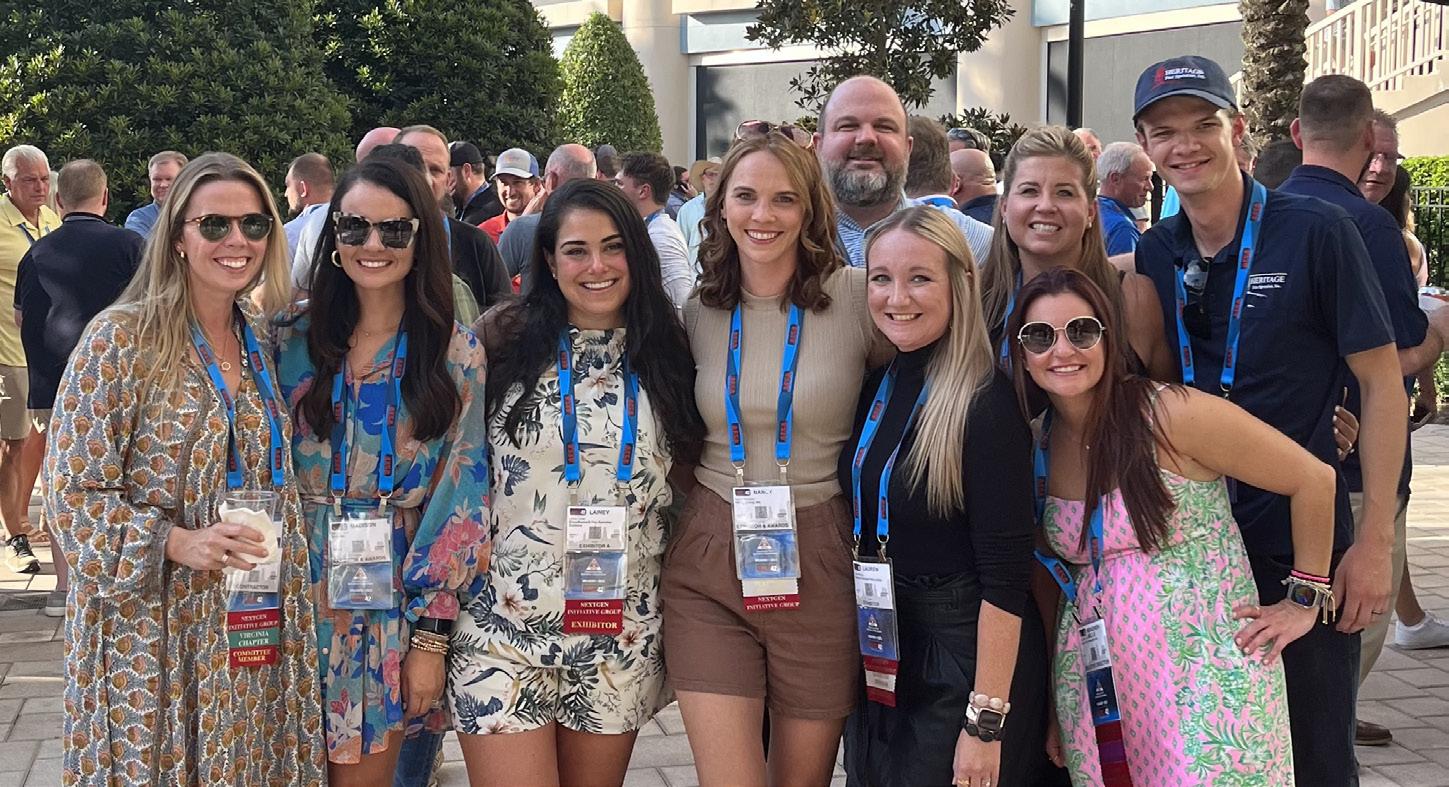
Involvement in AFSA’s NextGen Initiative offers networking, learning opportunities, and a community for those interested in advancing the next generation of fire protection industry professionals.
contracts or an expert fire sprinkler witness (Yes, those exist!) outlining methods and best practices to minimize liability exposure. As a result, I have implemented numerous changes within our company policies and field training to significantly reduce our liability risks.”
Complementing the educational aspect of convention is the AFSA exhibition where industry suppliers, manufacturers, and service providers showcase their latest products. This exhibition facilitates networking opportunities and allows attendees to explore cutting-edge technologies and solutions designed to enhance fire safety and efficiency.
At the heart of AFSA’s commitment to education lies the National Apprentice Competition, which serves as a testament to the organization’s dedication to nurturing talent and promoting excellence in the industry. This competition brings together apprentices from across the country to showcase their skills in installing and troubleshooting fire sprinkler systems.
Participants in the apprentice competition undergo thorough evaluations by seasoned professionals and judges, who assess
their proficiency in various aspects of fire protection. Beyond the competitive aspect, the competition fosters camaraderie and collaboration among apprentices, encouraging knowledge-sharing and skill development.
The most exciting aspect of the competition is that these apprentices are the next generation of fire protection professionals. Your presence is crucial in shaping the future of the industry as you are also the next generation of professionals. Several events throughout the week promote the NextGen Initiative (NGI). Wednesday evening, find your way to the New Attendee Reception, followed by the Opening Party that NGI sponsors. There are also several NGI seminars throughout the week that the workgroup has been working tirelessly to provide valuable content for you. From marketing and branding to hearing from industry titans with decades of experience, there’s something for everyone.
Luke Gaeta, vice president of sales and business development for Pye Barker Fire and Safety, notes, “Since attending my first AFSA convention nearly a decade ago, a lot has changed for me. Obviously, I am older, but
more than that, the relationships I have forged through my participation in NextGen and the industry at large have helped grow me both personally and professionally over that time.”
He continues, “A couple of years ago, we voted collectively to lift the 40-and-under age restriction for NextGen to foster inclusivity and participation regardless of age. The NextGen group and its members are an embodiment of a growth mindset and a desire to be constantly learning, irrespective of whether you just graduated from school or have 50 years in the industry. This is a critical component of the value of AFSA as both seasoned professionals with decades of industry experience and newcomers can learn from each other.”
Gaeta states that the fire protection industry and those involved in it need to evolve to the ever-changing construction landscape and the demands of legislative and prescriptive guidance around service, inspection, and maintenance requirements.
“Attending AFSA43 and its seminars has been invaluable in helping our company and me stay relevant as new technology, software solutions, and best practices are infused within our business. I would implore everyone to make a point of coming to Denver this year and being part of what makes our industry, fire protection, and AFSA great.”
Katie Meehan, chair of NGI, is looking forward to hosting the NGI events. “We’re expecting AFSA43 to be one for the books. We’ve spent the last six months prepping for the Opening Party and can’t wait to show everyone what Denver has to offer. The NextGen workgroup is honored to sponsor events throughout the week, and we love that we’re kicking things off with a ton of outdoor options. We’re focused on bringing the next generation of the industry into the fold.”
She continues, “The first time you come to convention, you really get to see the ‘big picture’ of what we’re all a part of. You meet other like-minded individuals who are focused on protecting lives and property all across the country.”
Network with peers and mentors who share your passion for protecting lives and property. Whether you’re seeking to deepen your expertise or explore new career paths, AFSA43 offers invaluable insights and connections that will propel your career
forward. Don’t miss out on this transformative experience—be a part of the driving force in advancing fire protection for generations to come.
AFSA43 serves as a pivotal event in the fire protection industry, promoting education, innovation, and excellence. By bringing together industry leaders, practitioners, and apprentices, AFSA fosters a culture of continuous learning and collaboration, driving advancements in the fire sprinkler industry. As AFSA continues to evolve and expand its reach, the annual convention,
exhibition, and apprentice competition will undoubtedly remain instrumental in shaping the future of fire protection. In essence, AFSA’s commitment to education not only strengthens the industry but also reaffirms its role as a beacon of innovation and excellence in fire protection. n
ABOUT THE AUTHOR: Meaghen Wills is the project manager for Anchor Fire Protection, a division of Sciens Building Solutions, Perkiomenville, Pa. She is a past chair and current member of AFSA’s NextGen Initiative and also serves on AFSA’s Membership & Chapter Development and Public Education & Awareness committees. In 2016, Wills was the first recipient of AFSA’s Young Professional of the Year Award.
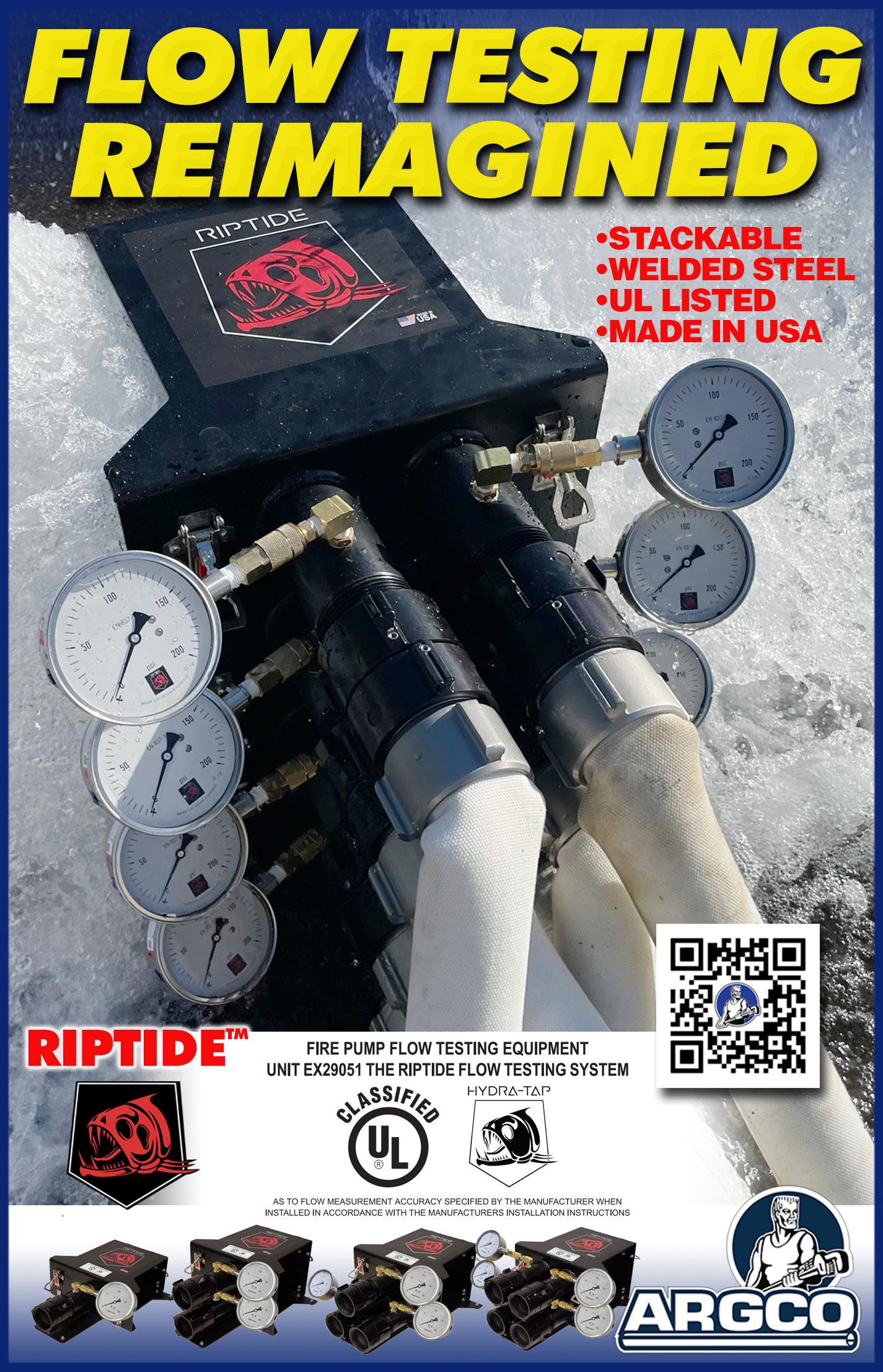
“SMOKE
The National Fire Protection Association® (NFPA®) announced “Smoke alarms: make them work or you! TM ” as the official theme for Fire Prevention Week™, October 6–12, 2024 at the NFPA Conference & Expo® in Orlando, FL. This year’s focus on working smoke alarms comes in response to NFPA data, which shows that the majority of U.S. home fire deaths continue to occur in homes with no smoke alarms or no working smoke alarms.
“Smoke alarms can make a life-saving difference in a home fire, but they have to be working in order to deliver the needed protection,” said Lorraine Carli, vice president of the Outreach and Advocacy division at NFPA. “This year’s Fire Prevention Week campaign reinforces the critical importance of smoke alarms and what’s needed to install, test, and maintain them properly.”
Having working smoke alarms in the home reduces the risk of dying in a home fire by more than half (54 percent). However, roughly three out of five fire deaths occur in homes with either no smoke alarms or no working smoke alarms. More than one-third (38 percent) of home fire deaths result from fires in which no smoke alarms are present.
“People tend to remove smoke alarm batteries or dismantle them altogether when they don’t know how to fix the issue. These actions put them at serious risk in the event of a home fire,” said Carli. “This year’s Fire Prevention Week campaign gives people the tools and know-how to keep their smoke alarms in working order.”
Key messages for this year’s Fire Prevention Week theme include the following:
• Install smoke alarms in every bedroom, outside each separate sleeping area (like a hallway), and on each level (including the basement) of the home.
• Make sure smoke alarms meet the needs of all family members, including those with sensory or physical disabilities.
• Test smoke alarms at least once a month by pushing the test button.
• Replace all smoke alarms when they are 10 years old or don’t respond when tested.
To learn more about Fire Prevention Week and this year’s theme, “Smoke alarms: Make them work or you!” visit fpw.org. Resources available online include key safety tips; smoke alarm activities; and FPW materials, products, and an educator

toolkit. Additional Fire Prevention Week resources for children, caregivers, and educators can be found at sparky.org and sparkyschoolhouse.org.
NFPA also offers a home fire sprinkler tip sheet download online at www.nfpa.org/en/events/fire-prevention-week/ fpw-printable-activities/. Scroll to the bottom of the page and look under “Safety Tip Sheets” for the “Home Sprinkelrs” download. and In addition, NFPA encourages people to use FPW as an opportunity to promote home fire sprinklers in some of its ongoing promotions.
Since 1922, the NFPA has sponsored the public observance of Fire Prevention Week. In 1925, President Calvin Coolidge proclaimed Fire Prevention Week a national observance, making it the longest-running public health observance in our country. During Fire Prevention Week, children, adults, and teachers learn how to stay safe in case of a fire. Firefighters provide lifesaving public education in an effort to drastically decrease casualties caused by fires.
Fire Prevention Week is observed each year during the week of October 9th in commemoration of the Great Chicago Fire, which began on October 8, 1871, and caused devastating damage. This horrific conflagration killed more than 250 people, left 100,000 homeless, destroyed more than 17,400 structures, and burned more than 2,000 acres of land. n
JOSH STRICKLAND | STRICKLAND FIRE PROTECTION, LLC, A PYE-BARKER FIRE & SAFETY CO.
Strickland Fire Protection, a Pye-Barker Fire & Safety Company, is thrilled to announce the completion of a critical fire sprinkler safety project at the historic Glen Echo Park Carousel, located in Glen Echo, Md. The system was designed by Justin Vogtsberger and the installation led by Derik Robinson. We are a proud Quality Contractor member of the American Fire Sprinkler Association (AFSA), and this project showcases our team’s commitment to excellence and safety.
The project involved removing and replacing the existing dry sprinkler system main to address corrosion issues. Our team efficiently replaced the looped mains and 24 horizontal sidewall sprinklers. We utilized 3-in. Schedule 40 steel piping with cut groove ends and 111/4 degree grooved fittings with flexible groove couplings. This arrangement allowed the installation crew to accommodate the bends needed to match the carousel’s unique architectural features. Cut groove end preparation in lieu off rolled groove end preparation allows more flexibility. The existing system that was replaced utilized custom fabricated fittings, which would add cost and lead time issues.
During Glen Echo Amusement Park’s glory days as an amusement park, the Dentzel Carousel was the jewel of the park.

The Dentzel Carousel Company built the carousel, which the amusement park installed in a 12-sided canopy building in 1921.
Dentzel Carousels are known for their realistic, graceful animals and elaborate carvings. The Glen Echo carousel is called a “menagerie carousel” because of it is made up of many different animals. The 40 horses, four rabbits, four ostriches, giraffe, deer, lion, and tiger stand in three concentric rings. The carousel moves to the music of a Wurlitzer band organ, one of 12 organs of this style are known to exist.
When the amusement park closed in 1968, the carousel was sold off along with other ride equipment. If not for the dedicated work of local citizens, this incredible piece of history and art might have been lost forever. Once recovered, the carousel and organ were donated to the National Park Service with the understanding that they would remain at Glen Echo Park and be operated for public enjoyment.
In 2019-2020, the carousel underwent major restoration to repair the roof, touch up murals, rehab the organ, and keep the carousel looking its best and running smoothly. n
ABOUT THE AUTHOR: Josh Strickland is the director of business development for Strickland Fire Protection, LLC, a Pye-Barker Fire & Safety Company, in Forestville, Md. He is a certified NICET Level III (ITWBS) and NICET Level II (WBSL).

Sprinkler system plans show the challenge of protecting the carousel.
The Virginia Chapter of the American Fire Sprinkler Association (AFSA) hosted its 30th Annual Burn Survivors Golf Tournament on October 11, 2023. Located again at the beautiful Williamsburg National Golf Club in Williamsburg, Va., the event went off without a hitch and was a great success for the charity. The weather was outstanding for the day of golf, giving, and fellowship among all participants.
The Burn Survivors Foundation (BSF) committee was very fortunate and thankful to sell out the tournament once again in support of the great charities. This year’s event included five presenting sponsors, which was outstanding and helped the 30th event exceed the committee’s goals. The BSF and board are so appreciative of the generosity shown! The 2023 event also included 240 golfers, four diamond sponsors, five platinum sponsors, 12 gold sponsors, three silver sponsors, 13 major sponsors, and 10 hole sponsors.
In addition to the sponsorship mentioned above, we want to give a special thank you to the Ray Fremont, Sr. Memorial Foundation and the Fremont family at General Air Products for their generous donation of $22,500 to the BSF. This was an unexpected and awesome gift from some great folks in the fire protection industry.
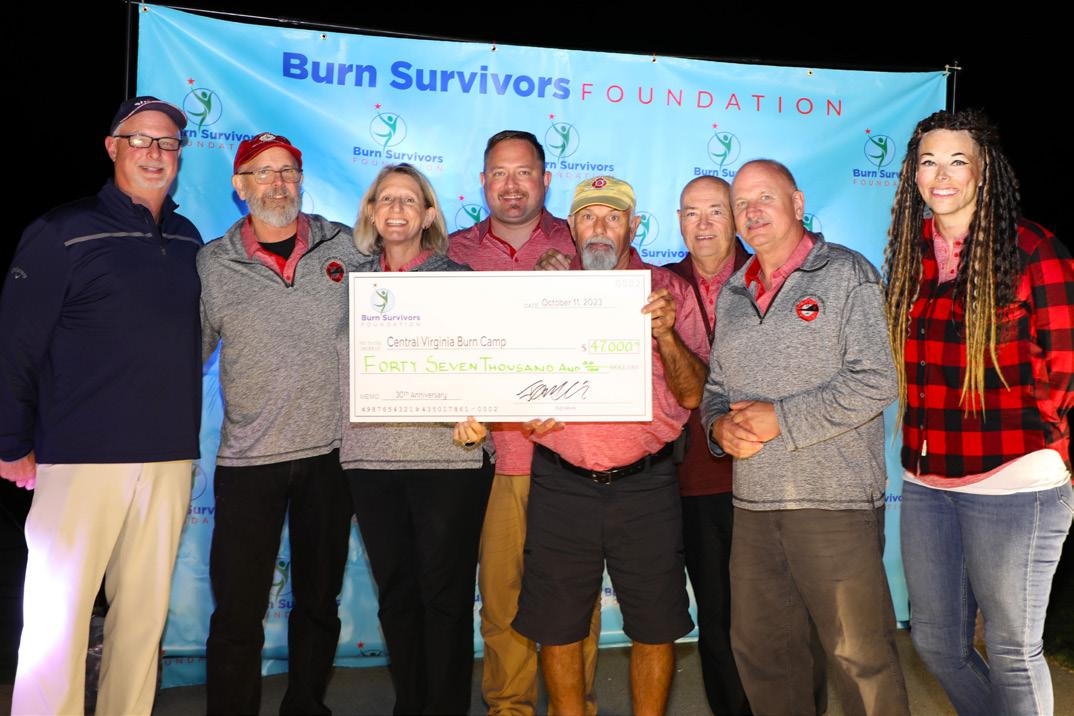
As always, the event started around 9:30 a.m. with the participants arriving at the facility’s pavilion to get registered, and to purchase raffle tickets, used for prizes drawn later. Typically, everyone’s use this time to engage in conversation and play catch-up with familiar friends and faces. At 11:30 a.m., the Williamsburg National staff opened the driving range and lunch was served.
O’Toole’s Restaurant once again donated a great lunch, including grilled hot dogs and Italian sausages, and provided chicken and beef for dinner.
Then, at 12:20 p.m., the BSF Golf Chairman, Jack Medovich, and the Williamsburg National staff requested that golfers head to their carts to receive directions, and the rules for the tournament were given to all the teams. At 12:30 p.m. sharp, teams were sent off to their assigned starting holes to begin play. Williamsburg National’s facility was in great shape, and the golfers enjoyed some terrific golf on the Jamestown and Yorktown courses.
The event includes many volunteers around the courses who provide beverages and snacks during the round. There are a good number of tips and donations given to beverage cart volunteers in support of the charities. The work of the volunteers for this event can’t be understated and is the key to the golf tournament’s success.


golfers were eager and lined up, ready to start a great day of play and fellowship.
Golfing ended around 5:30 p.m., and golfers started making their way back to the pavilion to turn in their team’s scorecards. This time afforded an opportunity to partake in dinner and continue with more friendly conversation.
As the event’s dinner concluded, and prior to the awards and prize announcements, special guests were recognized by Medovich, and some information about the charities was provided. One of the charities the BSF contributes to, The Evans-Haynes Burn Unit at VCU Medical in Richmond, Va., is in its 76th year of operation. This event also provides financial assistance to the Old Dominion Firefighters Burn Foundation, which supports the Evans-Haynes Burn Unit. The Old Dominion Firefighters Burn Foundation and The Evans-Haynes Burn Center have been assisting with the rehabilitation and assistance of burn survivors and their families for many years. The other charity that the BSF and this tournament supports is the Central Virginia Burn Camp for Kids in Charlottesville, Va. The camp has provided tremendous help for children with burn injuries and allows kids to get back to being kids. Many current counselors who now work at the camp were former campers.
The AFSA Virginia Chapter is proud to announce that it raised $100,000 at this tournament and donated it to these two charities. The Central Virginia Burn Camp for Kids was given $50,000 (received by Leslie Baruch and Tim Wright), and the Old Dominion Firefighters Burn Foundation was given $50,000 (received by Jerry Pruden and Doctor Michael Feldman). The total donations by the chapter and BSF over 30 years of this event have contributed $1,322,400 to these two great charities!
After the donations were presented to the two charities, next came the announcement of the prize winners and the golf team accolades from the day’s play. The chapter established the “Giles Cup” award for the Grand Prize winner in 2015. This cup was established to honor Marty Giles for all his magnificent work and support for the chapter’s golf tournament from its beginning. The chapter keeps the Master “Giles Cup” and places a name plaque on it each year with the Grand Prize winners listed, with the Grand Prize winners receiving a replica copy of the “Cup” for each player on the winning team. The following teams/participants are this year’s golf tournament winners:
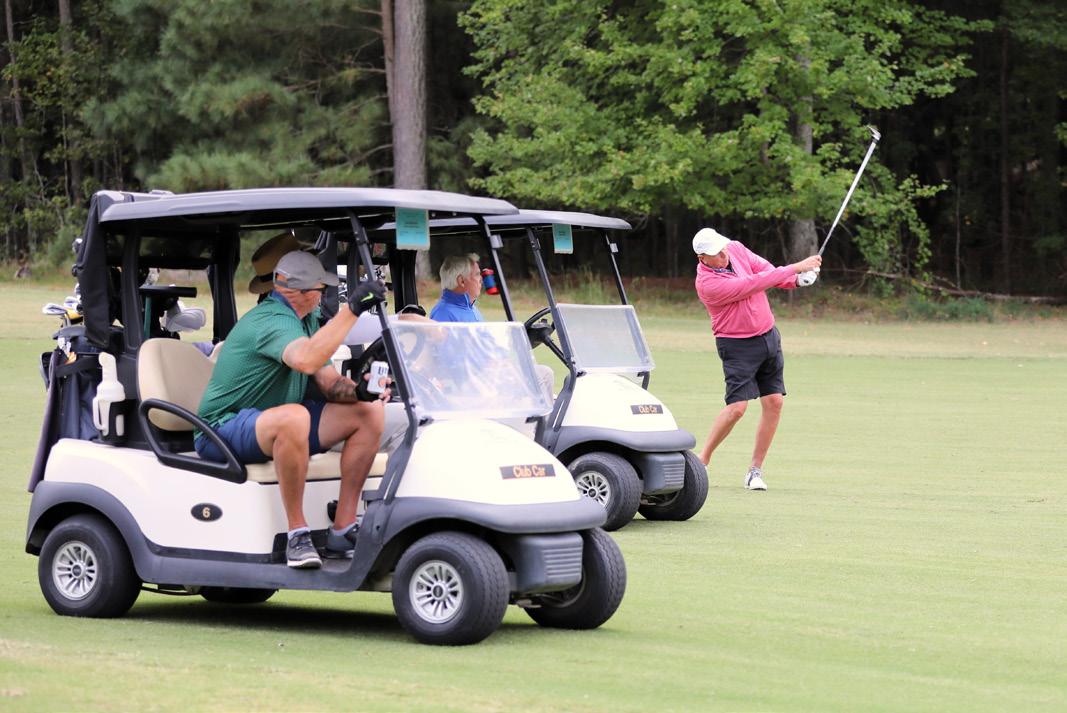
• Grand Champion Winner (Best Overall Team Score) Giles Cup Winner: the VSC Fire & Security Team of James Walter, Bill Freeby, Jim Dennis and Brad Strickland (score of 44).
• Reserve Grand Champion (Second Place overall Team Score): the Old Dominion Fire Fighters Team of Chris Pruden, Doug Bishop, Denny Maleski, and Derek Webb (score of 48).
Team Winners included:
• Fire Flight: 1st Place: Jamestown course—the O’Toole’s team of John O’Toole, Billy Grogan, John Siedecki, and Ben Raugstad (score of 51) and Yorktown course—the Summit Fire team of Jack Medovich, Allan Strange, Skeeter Heath, and Jason Schechterle (score of 48).
• Sprinkler Flight: 1st Place: Jamestown course—the VSC Fire & Security Team of Scott Williams, Kevin Moyer, John Batten, and Austin Batten (score of 58) and Yorktown course— the Core and Main team of Chad Waldridge, Joe Soloman, Sam Hitt, and Rich Kozel (score of 57).
• Life Saved Flight: 1st Place: Jamestown course—the Reliable Automatic Sprinkler Team of Scott McGehee, Mark McGehee, Jonathan Rice, and Jeremy Turner (Score of 65) and Yorktown course—the Cavalier Fire Team of Bob Beckwith, Dan Siemion, Gerard Strom, and Ron Schmidt.
Other winners of individual skill challenges recognized:
• Closest to the line: Jamestown course—Joe Roberts from the Old Dominion Fire team (1 ft-6 in.) and Yorktown course— Joe Welsh from the George Wagner team (on the line!);
• Closest to the pin: Jamestown course—Kevin Moyer from the VSC Fire & Security team and Yorktown course—Mike Larson from the Summit Fire team;
• Move-up Hole: (Bushnell speaker/GPS device): Jamestown course—the George Wagner team of Joe Torrice, Lexi Torrice, Dorianne Torrice, and Ron Tidd and Yorktown course – the Summit Fire team of Dean Howard, Paul Plunkett, Ryan Bierwerth, and Adam Schrierer; and
• Good sport (last-place-overall score): the Eagle Fire team of Lance Hall, Rob Coward, Mark Lane, and Anthony Shultz (score of 76).
The event also included drawings for some major prizes, the pre-drawn prizes and door gifts, and raffled items. Fifty-two
individual door prizes were given to golfers, drawn from the list of all players and volunteers. Also, during registration, each participating golfer received a BSF logo duffle bag, filled with some neat prizes from manufacturers, vendors, and other sponsors.
After the awards were announced, Medovich reminded the participants of the “codicil” agreement that he and George Wagner created as a way of building an endowment for the BSF to continue providing needed donations to these important charities. It is the intent for the AFSA Virginia Chapter/BSF golf tournament to live on for many years to come, but a means to be capable of providing donations to the charities is the goal in case there are future circumstances where the golf event cannot be held. The codicil agreement is a method for anyone to donate through their will or estate plans. The agreement can be modified or canceled at any time, and any donation is helpful to the endowment and the BSF’s financial preparedness. If you are interested in the BSF codicil agreement or wish to donate, please contact any of the BSF golf committee members or visit the BSF website at burnsurvivorsfoundationva.org for details.
We want to thank O’Toole’s Restaurant & Pub for donating lunch to all the golfers and volunteers and providing a terrific dinner. We also want to thank the 2023 BSF Golf Chairman’s committee which worked the full year, meeting 10
times to plan this tournament. The committee members are Chairman Medovich, Summit/FLSA; Harry Hoffon, Eagle Fire, Inc.; Bill Jones, retired, FirePro, Inc.; Scott Williams VSC Fire & Security; Jerry Pruden, Old Dominion Firefighters Foundation; Hooper Loscomb, Eagle Fire, Inc.; Craig Smith Ferguson Fire & Fabrication; Griff Brinkley Old Dominion Fire Company; Bob Beckwith Cavalier Fire; George Wagner retired Virginia Chapter executive director; Jason Gill, Crews and Gregory Sprinkler; and Steve McGee, ACI and current Virginia Chapter executive director.
The chapter would like to invite everyone to participate in the 2024 AFSA Virginia Chapter/ Burn Survivors Foundation Golf Tournament—our 31st annual event— on October 9, which will be held once again at the Williamsburg National Golf Club in Williamsburg, Va. More information will be available through email and the AFSA/BSF websites. Please put this on your calendar now to save the date! If you are interested in donating to the BSF or would like to learn more about the charities this event serves, please visit us online at www. burnsurvivorsfoundationva.org. n
ABOUT THE AUTHOR: Hooper Loscomb is with Eagle Fire, Inc. and vice president of the AFSA Virginia Chapter and Burn Survivors Foundation.
THIS TOURNAMENT COULD NOT HAVE BEEN SUCCESSFUL WITHOUT ALL OF OUR PRIMARY SPONSORS! THANK YOU!
PRESENTING SPONSORS –$25,000
Harry & Darlene Hoffon Jack Medovich George Wagner The Reliable Automatic Sprinkler Co. The Summitt Companies
DIAMOND SPONSORS – $15,000
Ferguson Fire & Fabrication Mike Meehan Summit/FLSA VSC Fire & Security
PLATINUM – $5,000
Argus Fire Control Atlantic Constructors/ACI BBQ Gives Back Hajoca – Fire Protection & Fab Services Performance Fire Protection Victaulic Viking Supply Net
GOLD – $2,500
American Fire Systems Cavalier Fire Protection Central Virginia Burn Camp Core and Main Eagle Fire, Inc. Etec Fire Protection General Air Products H & E Equipment Hiller Systems, Inc. Johnson Controls/JCI Old Dominion Fire Company Old Dominion Firefighter Burn Foundation O’Tooles Restaurant & Pub Service Trade Tornatech, Inc.
SILVER – $1,000
Extinguish Fire Corporation Merrill Lynch Robert & Judy Rees
MAJOR – $500
AFSA National Checkmark Services Crews & Gregory Fire Protection ESP – Engineered Systems & Products Fire Tech Services Fire Tech Systems Hydrotec, Inc. Jason Gill Mid-Atlantic Capital English Moore Potter Electric Signal Allan Strange United Rentals
HOLE SPONSORS – $200
ASC Engineered Services American Fire Systems Atlantic Lift Sdystems Carolina Fire Protection Chesterfield Professional Fire Fighters Assn. DuPont Etec Fire Protection General Air Products Monroe Porter & Holly Francis SouthTek Zurn Industries
* Note: The BSF received numerous other personal donations to support our charities. We appreciate each and every one!

(Level 3 & 4 Coming Soon)
• Convenient format and schedule
• Expert instruction and support
• Online testing accessible 24/7
• Online access to student history and grades
Level 1 & Level 2 www.firesprinkler.org/VIP
Why join a trade association? Have you ever seen a rowing crew as they glide across the water in their skull (boat)? Each crew member has a dedicated oar, which they are responsible for rowing to ensure the boat gets across the finish line. Just imagine if one or two crew members decided not to row; it would make it difficult for the boat to reach the intended goal. However, if they worked together, each crew member rowing in sync, the boat glides across the water, reaching the predetermined destination.
Trade associations tend to be very well connected and often collaborate on joint initiatives with other trade bodies that are either directly or indirectly connected to their specific area of focus. These strategic alliances provide members with valuable insight and further collaborative opportunities. Like the crew team analogy, an individual crew member could potentially get the boat across the finish line. However, it is much easier to have an entire team contributing to the effort. Being a trade association member means connecting with others with a vested interest in the fire sprinkler industry, just as you are.
Joining a trade organization is an excellent way to accomplish all those goals. Membership in a trade organization opens many doors to networking, professional development, and industry insight and boosts visibility for your company.
Many businesses or individuals join a trade association hoping to receive one specific benefit or achieve one goal, only to find that the organization offers many more benefits and opportunities than it previously imagined.
By joining a trade association, you will access valuable benefits such as industry-specific knowledge, networking events, educational resources, and advocacy efforts. These resources empower you to stay competitive, adapt to industry changes, and thrive in your market.
Networking is the most common and obvious benefit of joining a trade association. An association is filled with potential contacts, customers, and partners who can help your business reach the next level and become more prominent. The more active you are, the more you will see opportunities to build long-term relationships and partnerships that are mutually beneficial, so why not get involved? An association is a trusted environment where like-minded individuals can come together to share ideas, strengthen ties, and collaborate.
Training and education are other prominent benefits of being a trade association member. Continued education and personal development are crucial in achieving the industry’s top positions. Being a leader in the industry requires the right skilled personnel and a high level of expertise.

Skilled shortage is a common issue that affects many sectors; the fire sprinkler industry is no exception. Associations can play a vital role in bringing stakeholders together to address this issue through collaboration to ensure the industry has the visibility it needs to help facilitate a sustainable, skilled workforce to meet future demand.
Any line of work has a specific set of best practices/ standards deemed essential to ensure efficiency, repeatable quality, and consumer confidence. Membership in an association is a vital link to learning these practices and performing the best work possible. AFSA currently has 118 seats on 55 NFPA committees. By working with NFPA, AFSA could influence the codes and standards that affect our members and the industry.
Although these are just a few of the most common benefits of membership in a trade association, there are many others. No matter the industry, associations give their members many advantages in a fast-paced, competitive world. If you are not a member of AFSA, what’s preventing you from joining? If you are a current member, congratulations on taking the necessary steps to ensure your company’s success! n
MEDA MERRITT AFSA VICE PRESIDENT OF MEMBERSHIP & CHAPTER DEVELOPMENT




AFSA staff, with the support of the AFSA Board of Directors’ Chair
Linda Biernacki and TAC Member Steven Scandaliato, represented the association and the TAC at the 2024 NFPA Technical Meeting in Orlando, Fla. In addition to the results of the meeting, a summary of the discussions during the meeting and future action plans will be discussed in this issue’s column.
CAM 13-4 – Qualified Personnel
Reject Second Correlating Revision No. 3
AFSA Position: OPPOSE
Vote of NFPA Membership: WITHDRAWN
This CAM would have moved to reject SCR-3. If the CAM had passed, section 1.2.2 would have utilized the term “qualified personnel” in lieu of “knowledgeable and trained personnel.” The authorized maker of the motion did not move this CAM based on the result of CAM 13-3. During the debate of CAM 13-3 it was noted that language for section 1.2.2 could be modified to require installation and design by “knowledgeable, trained, and experienced personnel.” This option should be more favorable than the use of “qualified personnel.”
CAM 13-3 – Qualified Personnel Definition
Reject Second Revision No. 1015
AFSA Position: OPPOSE
Vote of NFPA Membership: PASSED (258-46)
This CAM moved to reject SR-1015. Since the CAM passed, the definition of “Qualified Personnel” will be reinserted into chapter 3. It was noted during the Technical Meeting that the term “qualified personnel” was, in fact, used in the document. Currently the only occurrence of this term is in Chapter 16. For high-rise buildings, owners must employ qualified personnel to supervise local alarm signals. Without the qualified per-sonnel supervising the signals, the owner is required to have the alarm signals transmit to a remote central station. Since the term was used in the document and the maker of the motion agreed to withdraw CAM 13-4, this action should be acceptable. AFSA and the TAC will keep a close eye on this issue in the upcoming revision cycles.
CAM 13-8 – Approved Storage Floor Plan
Reject Second Revision No. 1079 and Related First Revisions and Correlating Revisions
AFSA Position: SUPPORT
Vote of NFPA Membership: PASSED (158-133)
This CAM moved to reject SR-1079. Since the CAM passed, the requirement to provide an ap-proved storage floor plan with the working plans and hydraulic calculations will be removed from Chapter 28. The removal of the approved storage floor plan from Chapter 28 was ultimately successful due to the lack of required information that would be available to whoever develops the shop drawing for the sprinkler system. Rack layouts, storage arrangements, and other items might not necessarily be available to the contractor

KEVIN HALL, M.ENG, P.E., ET, CWBSP, PMSFPE AFSA DIRECTOR OF ENGINEERING

E. Parks Moore, P.E., Chair (National Scope)
S&S Sprinkler Co. (Pye-Barker)
Chris Campion (Region 6)
Eastern Fire and Safety
Alternate: Thomas Carlock
Christopher Caputo (Region 2)
Metro Fire Equipment
Jason Gill (Region 6)
Crews and Gregory Fire Sprinkler, Inc.
Alternate: Bob Beckwith
Matthew Heidler (National Scope)
Johnson Controls Fire Protection
Alternate: Kevin Galligan
Chris Johnson (Region 5)
Piper Fire Protection
Chris Kachura (National Scope)
VSC Fire and Security
Alternate: Andrew Hafner
Adam Levine (Region 6)
Capitol Fire Sprinkler
Jeff Lewis (Region 6)
VSC Fire and Security
Alternate: David Victor
Dale Lindh (National Scope)
Summit Companies
Alternate: Paul Szafranski
Eric Rieve (Region 7)
Rieve Fire Protection
Alternate: Connor Rieve
Steven Scandaliato (Region 4)
SDG, LLC
Taylor Schumacher (Region 3)
Alternate: Calen Schumacher
Security Fire Sprinkler
Steve Ulmer (National Scope)
APi Group
Byron Weisz (Region 1)
Cen-Cal Fire Systems, Inc.
Alternate: Erik Weisz
KEVIN HALL, M.Eng, P.E., ET, CWBSP, PMSFPE Staff Liaison
American Fire Sprinkler Association
AFSA Manufacturers/Supplier Council Chair
Phil Schechinger, ASC Engineered Solutions
Alternate: AFSA Manufacturers/Supplier Council
Vice Chair Andy Kaempfer, Safe Signal
UL Solutions
Kerry Bell, Alternate: Jeff Hebenstreit
Victaulic
Kevin Kelly, Alternate: Alaina Schwall
Johnson Controls
Melisa Rodriguez
Reliable Automatic Sprinkler Co.
Cary Webber, Alternate: Brandon Telford
Viking Corporation
Martin Workman, Alternate: Katie Teunessen
TAC meetings are open to all AFSA members in good standing. Contact your regional representative to discuss any issues that the TAC should hear. While the number of voting members on the TAC is currently restricted to 15 contractor companies, there are other opportunities for interested AFSA members. If you are interested in serving on an NFPA or UL technical committee, email technical@firesprinkler.org. All technical committee appointments are made by the TAC.
developing plans for a speculative warehouse building and would only be developed after a tenant is moved in. While the technical committee had good intentions with the extraction of this requirement into NFPA 13, it really needs to remain in the fire code to be en-forced by the fire code official.
CAM 13-14 – Remote Approval of Sprinkler Systems
Accept an Identifiable Part of Committee Comment No. 1055
AFSA Position: OPPOSE
Vote of NFPA Membership: WITHDRAWN
This CAM would have moved to accept part of CC-1055. If the CAM had passed, section 29.1.2 would have been modified to state the approval of the sprinkler system can be “performed” remotely in accordance with NFPA 915, instead of “witnessed” remotely in accordance with NFPA 915. The authorized maker of the motion did not move this CAM based on the feedback from our voting guide.
CAM 13-15 – Car Stacker Design Criteria
Reject Second Correlating Revision No. 17
AFSA Position: OPPOSE
Vote of NFPA Membership: PASSED (154-134)
This CAM moves to reject SCR-17. Since the CAM passed, suggested design criteria for car stackers will be re-inserted in the annex of Chapter 10 Installation of Standard Spray Sprinklers. The proponents of this CAM argued that there was a lack of process during the revision cycle and that this second correlating revision should have been considered new material and not have been in order. This action actually stemmed from a rejected public
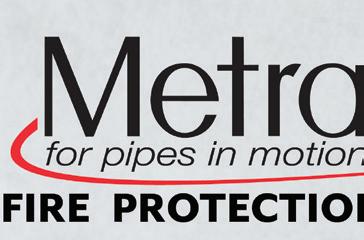
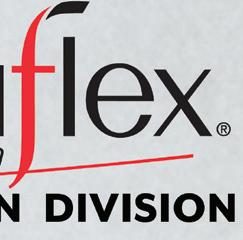

comment on a related issue, so there was no violation of the NFPA process. Unfortunately, the membership voted to uphold the technical committee’s work from the previous cycle and reject the second correlating revision. AFSA and the TAC will review this issue next cycle and identify other instances where the annex of an installation chapter provides improper discharge criteria guidance. AFSA is reviewing our options if we decide to appeal this outcome.
CAM 13-19 – Automated Inspection and Testing Definition
Reject Second Revision No. 1122
AFSA Position: SUPPORT
Vote of NFPA Membership: PASSED (279-20)
This CAM moved to reject SR-1122. Since the CAM passed, the definition of “Automated Inspection and Testing” will be reinserted into Chapter 3. Since the term “automated inspection and testing” is actually used in section 29.2.7, the membership easily passed this motion.
CAM 13-20 – Flexible Couplings for Seismic Protection
Accept Public Comment No. 214
AFSA Position: SUPPORT
Vote of NFPA Membership: PASSED (240-62)
This CAM moved to accept PC-214. Since the CAM passed, the requirements for the tolerances of a flexible coupling used for seismic protection will be added to Chapter 18. PC-214 was originally rejected but held as new material by the NFPA 13 Hanging and Bracing committee during the second draft meeting. Since that meeting, the NFPA 200 committee on hanging and bracing of water-based fire protection systems had met and chose to





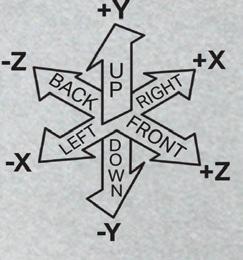







include the minimum axial deflection of flexible couplings in the body of the document in addition to the definition chapter. Based on this action, and the fact that NFPA 200 will ultimately have scope over all hanging and bracing requirements, the membership voted to include the requirements in Chapter 18.
CAM 13-21 – Flexible Coupling Definition
Accept Public Comment No. 213
AFSA Position: OPPOSE
Vote of NFPA Membership: WITHDRAWN
This CAM would have moved to accept PC-213. If the CAM had passed, the definition of “flexible coupling” would be simplified to apply to any listed coupling whether it is used in a seismic application or not. The authorized maker of the motion did not move this CAM in order to give the responsible technical committees the chance to discuss the technical merits of the change and make any necessary revisions during the next revision cycle.
CAM 20-6 – Power Requirement for Fire Pumps
Accept Public Comment No. 29
AFSA Position: SUPPORT
Vote of NFPA Membership: PASSED (237-109)
This CAM moved to accept PC-29. Since the CAM passed, the horsepower rating on fire pump motors will only

The technical committee will still be balloted on this and could still fail the motion returning the language back to the previous edition, but at least there was a clear direction from the NFPA membership that there needs to be a prescriptive capacity to limit the horsepower rating of fire pump motors and controllers. This was a highly debated debate—even before the Technical Meeting started. Opponents of the CAM attempted to sway the vote by speaking at each NFPA member section meeting during the convention, but luckily AFSA Vice President of Engineering & Techncial Services
John Denhardt, P.E., FSFPE, was able to refute opposing claims and prevent member sections from taking a misinformed position on the motion. While the CAM passed, there is still work to be done. A Tentative Interim Amendment will need to be submitted to the NFPA 20 committee to address correlation issued based on the action of the membership at the Technical Meeting. This was the preferred option by NFPA staff to keep the Technical Meeting running smoothly and also to allow for different language to be introduced.
CAM 150-7/8/9/10/11/14 – Sprinklering Class A Facilities
Reject Second Revision No. 12
AFSA Position: OPPOSE Vote of NFPA Membership: FAILED (161-210)
This CAM moved to reject SR-12. Since the CAM failed, the standard will require Class A facilities with an animal size threshold of a Medium Concentrated Animal Feeding Operation to be sprinklered or provided with alternative protection means acceptable to the AHJ. While the final result was in line with the TAC’s original position, there are a few things to consider. First, NFPA 150 is not widely adopted, and a lot of jurisdictions carve out the requirements from the fire code due to the burden it puts on farmers. In the future, there may need to be several com-promises in order for both sides to feel equally happy—or unhappy—about the result and to get more of these building protected where appropriate. The second issue that was raised was a liability issue. When the sprinkler system discharges, the FDA does not permit affected animals to be processed into the U.S. food supply, and insurance claims are only paid out when the affected animals are euthanized. If there is a fire and the sprinkler system goes off, the livestock is lost but the structure is protected. But what about an accidental discharge? Or failure to meet one of the conditions of your ITM contract? If the scales of justice do not fall in your favor, you may just be the proud owner of a flock of chickens or herd of cows numbering in the thousands. We need to make sure that our members can reasonably and reliably install, inspect, test, and maintain our systems in these facilities before installing sprinklers for the sake of installing sprinklers. n
AFSA’s Engineering & Technical Services Department staff present technical challenges here for you and your co-workers. These exercises are also excellent preparation for professional certification tests and may count as CEUs. Check with your certification organization. Answers to this issue’s questions will be presented in the next issue.
1. The title of NFPA 20 is ____________. The word “Stationary” was added to the title several editions ago. In addition, the standard now applies to additional types of pumps. Centrifugal single-stage and multistage pumps of the horizontal or vertical shaft design and positive displacement pumps of the horizontal or vertical shaft design are included. For example, water mist and foam concentrate pumps are included in the standard.
A. Standard for the Installation of Fire Pumps
B. Standard for the Installation of Pumps for Fire Protection
C. Standard for the Installation of Stationary Pumps for Fire Protection
D. Standard for the Design and Installation of Fire Pumps
2. NFPA 420 is a new proposed Standard on Fire Protection of Cannabis Growing and Processing Facilities. Visit www.nfpa.org/ codes-and-standards/nfpa-420-standard-development/420
A. True B. False
3. NFPA 88A, 2023 edition is the Standard for Parking Garages. Does it require all new parking garages to be sprinklered? NFPA 88A – 2023 6.4.1. Automatic sprinkler systems shall be installed in all parking structures in accordance with NFPA 13 and NFPA 13R as applicable.
A. Yes B. No
4. NFPA 200 is a new proposed, Standard for Hanging and Bracing of Fire Suppression Systems. This standard will eventually have control of all hanging, bracing, and seismic requirements in NFPA 13. Visit www.nfpa.org/codes-and-standards/ nfpa-200-standard-development/200
A. True B. False
For this issue, we are going to challenxge your knowledge of NFPA standards in general.
1. Water mist systems are inspected in accordance with what NFPA standard?
A. NFPA 25
B. NFPA 750
C. NFPA 13
D. Water mist systems are not covered by any NFPA standards
2. Foam water sprinkler systems are designed and installed are covered by what NFPA standard?
A. NFPA 11
B. NFPA 16
C. NFPA 19
D. NFPA 27
3. Fire protection of cannabis growing and processing facilities is/ will be covered by what NFPA standard?
A. NFPA 12
B. NFPA 18
C. NFPA 420
D. NFPA 1011
4. The protection of cultural resource properties such as museums, libraries, and places of worship is covered by what NFPA standard?
A. NFPA 13
B. NFPA 18
C. NFPA 909
D. NFPA 1016
5. Which standard is intended to prescribe minimum safeguards for construction, alterations, and demolition operations in order to provide reasonable safety to life and property from fire during such operations?
A. NFPA 3
B. NFPA 4
C. NFPA 241
D. NFPA 291
AUGUST 2024
19- 20
• Fire Pump ITM Workshop
AFSA Headquarters, Richardson, TX
www. firesprinkler.org/programs/fire-pump-itm-workshop/ 21-23
• Intermediate ITM Workshop
AFSA Headquarters, Richardson, TX
www. firesprinkler.org/programs/intermediate-itm-workshop/
SEPTEMBER 2024
4
• Introduction to the Fire Sprinkler Industry
AFSA Headquarters, Richardson, TX firesprinkler.org/programs/introduction-to-the-fire-sprinklerindustry/
Meda Merritt, vice president, membership & chapter development for AFSA, has earned ASAE’s Certified Association Executive (CAE®) credential from the CAE Commission of ASAE. Merritt was honored during the 2024 ASAE Annual Meeting & Exposition held in Cleveland, Ohio, August 10-13. The CAE program elevates professional standards, enhances individual performance, and designates those who have acquired and demonstrated the knowledge essential to the practice of association management. The CAE program is accredited by the National Commission for Certifying Agencies (NCCA).

5
• Fire Pump ITM Workshop
AFSA Headquarters, Richardson, TX firesprinkler.org/programs/fire-pump-itm-workshop/ 18-21
• AFSA43: Convention, Exhibition, & Apprentice Competition Gaylord Rockies Resort & Convention Center, Denver, CO
OCTOBER 2024
2 - 4
• Advanced Hydraulics Workshop
AFSA Headquarters, Richardson, TX firesprinkler.org/programs/advanced-sprinkler-hydrauliccalculations-workshop/ 14 - 16
• Sprinkler Hydraulics Calculations Workshop
AFSA Headquarters, Richardson, TX firesprinkler.org/programs/calculations/ 29 - Nov. 22
• Beginning Design School
AFSA Headquarters, Richardson, TX firesprinkler.org/programs/beginning-fire-sprinkler-systemplanning-school/
NOVEMBER 2024
5 - 15
• Intermediate Design School
AFSA Headquarters, Richardson, TX firesprinkler.org/programs/intermediate-fire-sprinklersystem-planning-school/ 6 - 7
• Beginning ITM Workshop
AFSA Headquarters, Richardson, TX firesprinkler.org/programs/beginning-itm-workshop/
Congratulations to AFSA’s Director of Engineering, Kevin Hall, M.Eng., P.E., ET, CWBSP, PMSFPE. Hall has been re-elected to the Society of Fire Protection Engineers (SFPE) Chesapeake executive board. He also chairs the Constitution and Bylaws Committee. As a board member atlarge, Hall will serve for the 2024-2025 term. His expertise and commitment will enhance SFPE Chesapeake’s efforts in fire protection industry.

“Kevin’s continued growth in the fire protection engineering profession is being noticed by his peers,” says John Denhardt, P.E., ET, CWBSP, FSFPE, vice president of engineering & technical services. “In 2021, Kevin was awarded the International SFPE 5 under 35 Award, and he was just reelected to the Chesapeake Chapter SFPE executive committee. Keep up the great work, Kevin!”
The American Fire Sprinkler Association (AFSA) has received the 2024 Distinguished Association of the Year Award from Dallas/Fort Worth Association Executives (DFWAE). AFSA was recognized at DFWAE’s annual Association Day on April 22, 2024, for AFSA’s contributions to the success of DFWAE and the association community.
The award was accepted at the event by Meda Merritt, vice president, membership & chapter development for AFSA. “Working in membership, I have learned the value and importance of engaging with an association,” says Merritt. “DFWAE has strengthened me as a leader, and the networking has rewarded me, my colleagues, and AFSA with great opportunities, such as receiving the Distinguished Association of the Year award. Serving on DFWAE’s Membership and IDEA committee has been a pleasure, and I look forward to continued involvement.”
The American Fire Sprinkler Association (AFSA) is proud to announce its sponsorship of a recent NFPA report title, “Classification of Modern Vehicle Hazards in Parking Structures and Systems.” The study was conducted in two phases and is now published online at NFPA.org. n
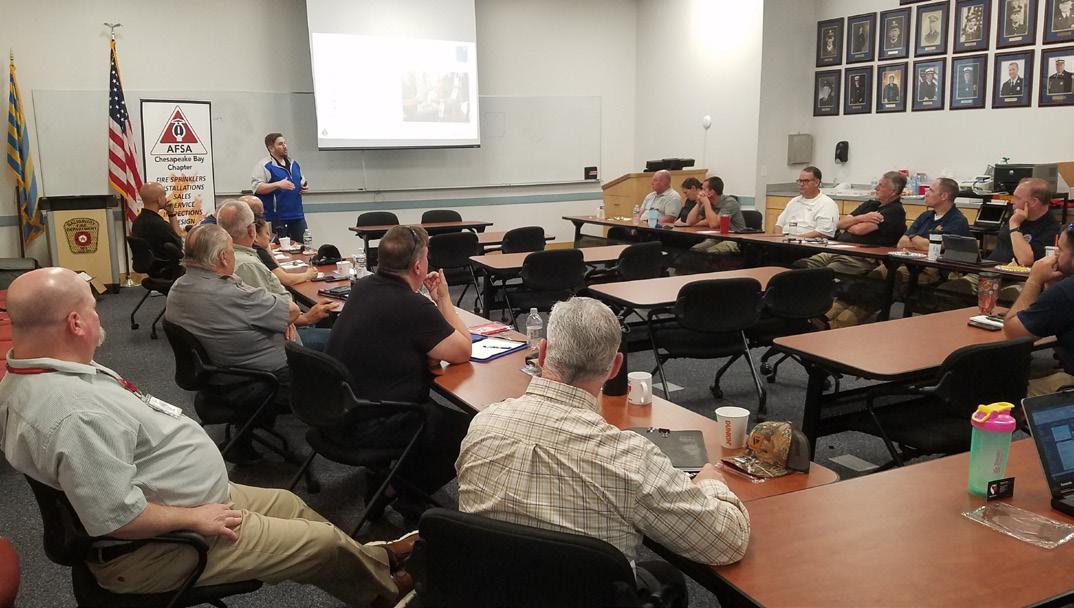
On June 3, 2024, AFSA’s Chesapeake Bay Chapter in cooperation with AFSA National provided NFPA training for AHJs from both sides of the Chesapeake Bay as well as the State of Delaware. The training took place at the Salisbury, Md. Station 16 headquarters. The day-long training was attended by fire marshals, code officials, inspectors, and other AHJs responsible for the enforcement of fire protection system installation, inspection, and maintenance of NFPA 20, 14, 13, 13R and 13 D systems. The training was provided free-of-charge.
AFSA’s Director of Engineering Kevin Hall, M.Eng., P.E., ET, CWBSP, PMSFPE, presented the information. Those in attendance received eight hours of information as well as participated in the discussion of realworld scenarios found in their day-to-day function as AHJs. The topics included recent changes in NFPA 25, acceptance testing of standpipe systems, approaches in fire pump design/installation and approaches to NFPA 13D and 13R system installation and inspection.
Also in attendance was a member of the Wicomico County, Md. public schools system, who was there to find out more about the fire sprinkler industry after a successful career day presentation at the Wicomico County Technical Center by the chapter in May of this year.
On April 30, 2024, Chapter Chair Jason Martin, Chapter NextGen Chair Cameron Mummert, and Chapter Treasurer David Victor attended the Congressional Fire Services Institute’s (CFSI) 2024 National Fire and Emergency Services Dinner held at the Washington Hilton in Washington, D.C. The guest speaker was Alejandro Mayorkas, secretary of the United States Department of Homeland Security. Visit AFSAChesapeakeChapter.org/.
The Louisiana Fire Sprinkler Association (LFSA) held a social event on April 22 at Golf Suites. Guests played games and enjoyed food and drinks. Ameripipe and Ferguson Fire & Protection sponsored the event. The following day, LFSA had over 35 registrants attend seminars led by AFSA’s


Vice President of Technical Services & Engineering John Denhardt, P.E., FSFPE. a membership meeting, and board meeting at the Louisiana State Fire Marshal’s Office. Thank you to our lunch sponsor BRASSCO! Visit lafiresprinkler.org/. n
Save the date – October 13, 2024 – for the 35th Annual FSCATX Charity Golf Classic benefitting Scottish Rite Children’s Hospital. There will be golf, raffles, fabulous player gifts, fun contests, and a live auction! Shotgun start at 10:30 a.m. at the Trophy Club Country Club. Join us for the best tournament of the year! Visit fscatx.org/. n
ALABAMA
Lee Seewald – Pres.
202-252-5101
Greg Willis – Exec. Dir. 334-567-4257
ARIZONA
Jason Williams – Chair
480-421-8411
Denniece Cooper - Exec. Dir. 480-282-5393
ARKANSAS
Randy Gilliam – Chair
479-646-8934
Coleman Farrar – Exec. Dir. 479-461-3863
CHESAPEAKE BAY
Jason Martin – Chair 240-848-2710
Danielle Fowler – Exec. Dir. 410-972-1122
COLORADO
Roger Wallace – Chair
719-337-6550
Kim Cook – Exec. Dir. 704-213-4368
DALLASFORT WORTH
CJ Bonczyk – Chair 817-529-1693
FLORIDA
Bob DiModica - Chair 239-514-7155
Jessica Cox – Exec. Dir. 813-784-3624
GEORGIA
Allen Cagle – Chair 770-554-5285
Tracy Williams – Exec. Dir. 770-355-0774
Dave Karrick – Chair 925-417-5550
Alicia Karrick – Exec. Dir. 510-398-9185
GREATER KANSAS CITY
Mark McKenzie – Chair 913-432-6688
Brett Heinrich – Exec. Dir. 785-825-7710
ILLINOIS-INDIANA
Skyler Bilbo – Chair
217-342-2242
Mitch Bortner – Vice Chair 206-348-0078
LOUISIANA
Randy Laguna – Chair
504-464-6236 ext 224
Ellen Ballard – Exec. Dir. 318-688-8800
MICHIGAN
Doug Irvine, Jr. – Chair 616-784-1644
MINNESOTADAKOTAS
Marc Huag – Chair 701-232-7008
Tina Hoff – Exec. Dir. 701-709-1899
NEW ENGLAND
Lisa DiRienzo – Chair 508-298-2134
Cheryl Tsetsilas – Exec. Dir. 603-890-3331
OKLAHOMA
AFFILIATE ofsa.info
Tim Hollon – Pres. 918-851-2416
NEW JERSEY
Thomas Bowlby, Jr. – Chair 908-226-5313
Victor Lugo – Exec. Dir. 201-635-0400
NEW MEXICO
Paul Chavez – Chair 505-898-9197
Renee Nix - ED/Treasurer 505-690-0913
NORTH CAROLINA
Mark Williams – Chair 704-425-4342
John Turnage – Exec. Dir. 919-624-3456
OHIO
Scott Huber – Exec. Dir. 513-942-1500
PACIFIC NORTHWEST
Chris Russell – Chair 360-734-4940
Ron Greenman – Exec. Dir. 253-576-9700
SACRAMENTO VALLEY
Holly Gray Salmon – Chair 916-296-9913
Paulene Norwood – Exec. Dir. 916-296-0635
SAN DIEGO
Mark Scott – Chair 619-778-2377
Rhonda Gudger – Exec. Dir. 951-326-4600
SCHUYLKILL
Dan Hinkle - Chair 215-778-5484
Meaghen Wills – Exec. Dir. 610-754-7836
SOUTH CAROLINA
Tyler Blume – Chair 864-909-2643
Ashley McAdams – Exec. Dir. 864-561-4088
SOUTHERN CALIFORNIA
Vahe Zohrabian – Chair 818-822-1797
TENNESSEE
Casey Milhorn – Chair 615-349-5278
David Pulliam– Exec. Dir. 901-484-0605
UTAH ROCKY MOUNTAIN
Mark Winder, Jr. – Chair 385-630-8064
Brent Heiner – Exec. Dir. 801-544-0363
VIRGINIA
Bob Beckwith – Chair 540-659-4675
Steve McGee – Exec. Dir. 757-544-0520
TEXAS AFFILIATE fscatx.org
David Stone – Pres. 713-466-9898
Sarah Kiefer – Exec. Dir. 512-844-6632

New members as of July 10, 2024
Borusan Pipe, Houston, TX
Essential, Fremont, CA
Fiberglass Tank Solutions, Camdenton, MO
Fire University, Penns Grove, NJ
Uptick Fire Inspection Software, Denver, CO
Wilson and Cousins, Burlington, ON
A&E DESIGN FIRMS
Fuego Fire Sprinkler Design LLC, Roswell, GA
ALSP LLC dba Pass Fire Protection, Belen, NM
Contender Fire Sprinkler of Texas, Inc. Katy, TX
Fireaway LLC, Oxford, GA
Freedom Fire LLC, Henniker, NH
Marmic Fire and Safety, Joplin, MO
Overwatch Fire & Security, Kannapolis, NC
Pass Fire Protection LLC, Phoenix, AZ
Raptor Fire Protection Inc. Martinez, CA
Reep Fire Protection, Murrieta, CA
São Marcos Soluçoes e automação industrial, Vitória de santo ant, PN, BRAZIL
Sierra Fire Protection Inc. Clovis, CA
Vegas Valley Fire Protection, Las Vegas, NV
Cameron Fire Protection Ltd, Calgary, AB, CANADA
Exponent, Bowie, MD
Merritt Properties LLC, Holly Ridge, NC
Pinnacle Infotech Inc., Sugarland, TX
FACILITY MANAGERS
Nicholas Buchta, Simpsonville, SC
James Luongo, Billerica, MA
Jacob Marrone, West Milton, NY
Christopher Stone, Quinton, VA
George Adams, Columbia, SC
Darren N. Amos, Mountain Home AFB, ID
Kerry Autio, Forest Park, OH
Cory Bader, Murrells Inlet, SC
John Badgett, Beaufort, SC
Gregory Bagley, Myrtle Beach, SC
Jack Baldwin, Ringwood, NJ
Ed Barnett, Santee, SC
Nicholas Baxter, Conway, SC
Kevin Berkel, Charleston, SC
Jeremy Braithwaite, Olathe, KS
Matthew Braunshweiger, West Hartford, CT
Aaron Bridges, Portland, ME
Shelby Brock, Richland Hills, TX
Matthew Brown, Farmington, MN
Noah Brownlow, Berkeley, CA
Juan Cabrera, Lima, Lima
Chris Camacho, Greenville, SC
Lee Carter, Travelers Rest, SC
William Catoe, Lugoff, SC
Kevin Christenbury, Clemson, SC
Jim Clement, Greenville, SC
Traci Collett, Helena, MT
Carolyn Conry, Oakland, CA
Dameion Dawson, Columbia, SC
John Dawson, Simpsonville, SC
Eric DeArmitt, Bastrop, TX
Tony Dennis, Mount Pleasant, SC
Brian Dimock, Castle Rock, CO
Justin Domogauer, N. Myrtle Beach, SC
Justin Driver, Columbia, SC
Justin Ducey, Leawood, KS
Jose Dunker, Santo Domingo, Dominican Republic
Jayson Edge, N. Myrtle Beach, SC
Phil Elliott, Camden, SC
Scott Ensminger, Columbia, SC
Corina Falaschi, Merced, CA
John Farmer, Roebuck, SC
James, Farrell, Greenville, SC
George Flanagan, Conway, SC
Herb Franklin, Summerville, SC
Greg Frazier, N. Myrtle Beach, SC
Gill Frierson, Manning, SC
Lucas Fuller, Bethlehem, PA
Eddie Gardner, Cherry Hill, NJ
Mark Gillespie, Cincinnati, OH
Ka’nya Givens, Chester, PA
Marcus Glasgow, Fort Collins, CO
Marcus Glenn, Columbia, SC
Jeff Goorman, Denver, CO
Jim Gurley, Greenville, SC
Steve Gutierrez, Forest Hill, TX
Don Hall, Greenville, SC
James Hamby, Anderson, SC
Donnie Helms Jr., Rock Hill, SC
Randall Hipp, Greer, SC
Steven Holmes, Greenwood, SC
Paul Horn Pelzer, SC
Rodney Howell, West Columbia, SC
Jeremy Hudson, Laurens, SC
James Jackson, Chester, PA
Bryan Johnson, Clemson, SC
Scott Keeley, Greer, SC
Don Kelbley, Toledo, OH
Tom Keller, Conway, SC
Nikki Ladd, Lebanon, OH
Craig Landolt, Atlanta, GA
Krystal Langston, Clinton, SC
Scott Lee, Moncks Corner, SC
Jeremiah Lee, Summerville, SC
Tom Lever, Lancaster, PA
Bengie Leverett, Columbia, SC
Sean Harshaw, Daniel Island, SC
Russell Hart, Greer, SC
Eric Lewis, Hemingway, SC
Calvin Linke, Kingstree, SC
Timothy Lynch, West Windsor, NJ
Jamal Mack, Simpsonville, SC
Jonathan Marr, Derby, KS
Jeremy Martin, Greenville, SC
John McCartney, Salisbury, NC
Kevin McClain, Pickens, SC
David McDonough
George Mick, Columbia, SC
Dean Miller, Toledo, OH
Wanda Miller, N. Charleston, SC
Terry Mueller, Columbia, SC
Rafic Nakouzi, Cincinnati, OH
Chris Nalley, Greenville, SC
Jeff Nelson, Greenville, SC
Jose Nieves, Loa Alamos, NM
Brad Owen, Easley, SC
Christopher Owens, Myrtle Beach, SC
Marty Phillips, Simpsonville, SC
Allison Pierce, Florence, SC
Jeremy Piering, Richardson, TX
Michael Platt, Greenville, SC
Daniel Roberts, West Columbia, SC
Andrew Rollins, Rock Hill, SC
Christopher Romano, Bethpage, NY
Mike Roosevelt, Andover, KS
Stebo Saylors, Greenville, SC
Derek Schepens, Auburn, CA
Kris Scott, Columbia, SC
John Sebastian, Evergreen, CO
Adam Silva, Richardson, TX
Marc Smith, Georgetown, SC
Tommy Smith, Conway, SC
Russell Smith, Murrells Inlet, SC
Kenneth Smith, Columbia, SC
Justin Sneed, Oxford, MS
John Stout, Conway, SC
Joseph Suttles, Greenville, SC
Randy Swinton, Kingstree, SC
Tom Syfert, Columbia, SC
Ariel Thomas, Columbia, SC
Mark Thompson, Manning, SC
Tammy Tolbert, Sumter, SC
Don Toler, Columbia, SC
Scott Unwin, Mount Pleasant, SC
Ken Van Hall, Caledonia, MI
Terry Vaughan, Anderson, SC
James Walker, Greenville, SC
Jason Walsh, Black Hawk, CO
Craig Walters, Clemson, SC
Jeffrey Watson, Columbia, SC
Russell Watson, Greenville, SC
Andrew West, N. Myrtle Beach, SC
Myron Wheeler, Conway, SC
Dylan Wikle, Conway, SC
Aubree Wilhelm, Madera, CA
Janis Williams, Lehigh Acres, FL
John Mark, Williams, McKinney, TX
Daniel Woolwine, Columbia, SC
Daryl Workman, Campobello, SC
Kenneth Wulle, Bloomsbury, NJ
Total construction starts rose 6% in April to a seasonally adjusted annual rate of $1.13 trillion, according to Dodge Construction Network. Nonresidential building starts gained 17%, nonbuilding starts were 4% higher, while residential starts slipped 1%. On a year-to-date basis through April total construction starts were up 13% from the first four months of 2023. Residential starts were up 22%, while nonbuilding starts gained 14% and nonresidential building starts rose 5%.
For the 12 months ending April 2024, total construction starts were up 2% from the 12 months ending April 2023. Nonresidential building starts were down 8% while residential starts were up 3%, and nonbuilding starts were up 16% on a 12-month rolling sum basis.
“The rebound in starts in April was certainly good news for the sector,” said Richard Branch, chief economist of Dodge Construction Network. “While the uncertain timing of Fed interest rates cuts is causing concern, developers and owners are feeling reasonably confident that end-market demand will sustain project starts in some sectors. While risk remains in the sector for interest rates, labor, and material prices the value of projects in planning has been reasonably stable indicating future confidence.” n
Total construction starts rose 10% in May to a seasonally adjusted annual rate of $1.24 trillion, according to Dodge Construction Network. Nonbuilding starts gained an impressive 49% during the month, driven by the start of an offshore wind project and an LNG facility, while residential starts lost 7% and nonresidential building starts were down 2%. On a year-to-date basis through May, total construction starts were up 11% from the first five months of 2023. Residential starts were up 16%, while nonbuilding starts gained 17%, and nonresidential building starts rose 3%.
For the 12 months ending May 2024, total construction starts were up 2% from the 12 months ending May 2023. Nonresidential building starts were down 7%, residential starts were up 5%, and nonbuilding starts were up 14% on a 12-month rolling sum basis.
“Even though May’s gain in construction starts was mainly due to a handful of large projects, the data highlights that there is some grassroots demand building in the market,” said Richard Branch, chief economist of Dodge Construction Network. “Single-family starts, in particular, have risen in 8 of the last 12 months despite high mortgage rates. Growth in singlefamily will incentivize further demand for retail, health, and education starts, among others, and the stability in the Dodge Momentum Index, which tracks projects in planning, underscores this optimism.” n

Fayette Pipe announces the launch of FayetteGuard, an LED UV-cured paint system for black steel pipe exteriors. This innovative coating process, the first in the United States, employs advanced LED technology to ensure enhanced protection, energy efficiency, durability, and long-lasting performance for the rigorous demands of fire protection, plumbing, and HVAC applications. It also offers an attractive black sheen that enhances the aesthetic appeal of installations.
The LED UV-curing technology that Fayette Pipe employs uses high-intensity electronic ultraviolet (UV) light to solidify photoreactive substances used in the FayetteGuard paint instantly. This method differs from traditional drying methods, which rely on evaporation or absorption to solidify chemistry. Samples are available upon request.
In addition, Fayette Pipe has announced the launch of its USA-made ASTM A53 Type E Grade A ERW XH Schedule 80 black steel pipe for steam, water, gas, or air lines. Fayette’s extra heavy Schedule 80 is available in diameters of 1 / 2 -in. to 1 1 / 2 -in. and from 10 ft up to 21 ft in length in plain, threaded, and coupling ends. It is suitable for welding and threading. All Fayette Pipe products are hydrostatic and nondestructive electric tested to ensure the highest quality.
The company also manufactures Schedule 10 and 40 American-made and melted black steel pipe, used in fire sprinkler, HVAC, and low-pressure plumbing applications. It also produces a variety of black carbon and zincplated pipe nipples and fittings under the Fayette Nipple brand. Visit fayttepipe.com.


Viking’s new flame detector.
FireFlex’s Integrated Compressed Air Foam (ICAF) System has received FM Approval to be used with the ARK SFFF Fluorine-Free Foam Concentrate. Viking ARK fluorine free foam provides rapid fire knockdown, effective foam blanket, and burnback resistance, matching or exceeding the performance of traditional foams without the environmental and health risks. The FM Approval confirms that the new foam meets the rigorous standards for fire suppression effectiveness, ensuring reliable protection for various applications. Viking ARK SFFF is particularly well-suited for environments requiring a high-performance fluorine-free alternative. In 2004, The ICAF (Integrated Compressed Air Foam) system received FM Approval for class B hydrocarbon spill fires, pool fires, and cascading fires. FireFlex successfully developed the capability of generating and delivering CAF with high momentum through a fixed piping network and a specially designed discharge device, that yields excellent foam quality.
The approved use of the ARK SFFF foam concentrate with the ICAF System, facilitates firefighting in areas where water storage, or environmental cleanup of foam mixed with a flammable liquid after the fire, could be an issue. Moreover, the ICAF System’s mixture uses up to four times less water and up to six times less foam concentrate than conventional foam systems making it ideal for firefighting in areas affected by limited access to water or water scarcity. Visit FireFlex.com.
Viking Group, Inc. announces the FM Approved VSF303H multi-spectrum IR H2 flame detector, which can detect hydrogen plume fires
at 131 ft (40 m) in a two-to-five-second response time on average.
The explosion proof multi-spectrum infrared (IR) hydrogen (H2) flame detector utilizes the latest IR flame detection algorithms to ensure maximum false alarm immunity in markets like the oil and gas industry, chemical manufacturing, storage applications and aviation segments. Visit VikingGroupInc.com.

RELIABLE ANNOUNCES FM APPROVAL FOR MODEL MV SPRAY NOZZLES
The Reliable Automatic Sprinkler Co. Inc. announced FM Approval for Model MV Medium Velocity Directional Spray Nozzles. Reliable® Model MV Spray Nozzles are open directional spray nozzles designed for use in water spray fixed systems for fire protection applications. Model MV Nozzles are available in eight deflector angles and seven orifice sizes, providing a comprehensive range of options to protect exposed vertical, horizontal, curved, and irregularly shaped surfaces.
Model MV Nozzles are used primarily in accordance with NFPA 15 and provide protection of irregularly shaped surfaces to help prevent structural damage and protect against exposure fires. The small droplet size cools and absorbs heat from an external fire. Visit ReliableSprinkler.com. n

Christopher Campion, Jr. with the New Jersey State Fire Protection Association received the spector of the Year Award 2024 during the Building Safety Conference of New Jersey held May 8-10. Campion is an AFSA Contractor member who serves as chair of the AFSA Schuykill Chapter and sits on the Technical Advisory Committee (TAC). With over 25 years in the industry, Campion brings a wealth of experience, starting as an inspector and branching into various aspects of the trade. He holds licenses as a fire protection engineer, contractor, and fire sub-code official, signifying his expertise.
Based in New Jersey, Campion actively serves as a fire sub-code official, runs his own fire protection systems company, and partners with a consulting engineering firm. He is deeply involved in industry associations. He serves on the NFPA 25 committee and others.
Campion’s technical proficiency is highlighted by his certifications: NFPA Certified Fire Protection Specialist, NICET Senior Engineering Technician in Fire Alarm Systems and Special Hazards, and Engineering Technician in Water Based System testing.
In addition to his professional endeavors, Campion is deeply committed to his community. He has served as a former fire chief and emergency management coordinator and currently holds the position of mayor, exemplifying his dedication to public service.
The National Fire Protection Association® (NFPA®) has announced Kelly Ransdell as the new director of the NFPA Public Education division. In this role, Ransdell will oversee all public education messaging, program development and implementation, and serve as the primary public education expert for NFPA.
Ransdell brings a career-long passion for public education and is a recognized expert throughout the country. Most recently, she served as the
NFPA regional director for the South Central United States. Before then, she was an NFPA regional specialist, covering 17 states. Prior to joining the association in 2015, Ransdell worked as the deputy director of the North Carolina Department of Insurance – Office of State Fire Marshal, overseeing the Prevention, Programs and Grants Division. In addition, she was the state director of Safe Kids North Carolina, which included 42 coalitions covering 72 counties.
Before becoming an NFPA staff member, Ransdell was involved with the association in many capacities. In 2007, she began working as an NFPA public education advisor in 11 states. In addition, she was a member of the NFPA 1035 committee. Ransdell is highly regarded in the public education community and will work collaboratively with fire and life safety professionals to advance safety through effective public education information and programs. Visit NFPA.org.
Core & Main, Inc. (NYSE: CNM) announces changes to its executive leadership team. Jack

Schaller, president, has announced that he will transition to a role as executive vice president. Given the strong performance under his leadership, Schaller has committed to ensuring the ongoing success and continued growth of the business. As part of this transition, Schaller will continue supporting the integration of our newly acquired businesses, leading supplier relations and assisting with this organizational transition.
As part of that plan, Brad Cowles, president, will be expanding his role to lead the waterworks product line, previously led by Schaller. Cowles has more than 18 years of leadership experience in the organization, most recently leading the fire protection product line. In addition to his core waterworks responsibilities, Cowles will have responsibility for several growth and margin initiatives.
Finally, Core & Main is excited to announce that Mike Huebert will join the company July 22, 2024, as president, overseeing our fire protection product line and certain other high growth product lines. Huebert is executive vice president of sales with Advanced Drainage Systems (NYSE: WMS) where he oversees field sales and engineering, national accounts and retail sales teams. He will bring a wealth of experience, having managed business development, commercial operations, and driving sales and operational performance for ADS, one of Core & Main’s top suppliers. Visit CoreandMain.com.
The National Fire Protection Association® (NFPA®) completed the election of its board of directors at its annual meeting on June 17, 2024, which included the naming of a new chair, the election of two new members, and the reelection of a third member of the board.

R. David Paulison has been elected by the NFPA board of directors as the new chairperson. Paulison, who has been serving on the NFPA board since 2015 and was the first vice chair, brings extensive experience in emergency management and fire safety to his new role. He has had a distinguished career, previously serving as the administrator of the Federal Emergency Management Agency (FEMA) and as the U.S. Fire Administrator.
He also spent 30 years with the MiamiDade Fire and Rescue Department, rising through the ranks from firefighter to becoming fire chief in 1992. His leader -
ship and commitment to public safety have earned him the respect of his peers and the broader safety community. As the new chairperson, Paulison will work closely with NFPA’s executive leadership team and board members.
Paulison takes over from Russell Leavitt, executive chairman of Telgian Holdings, Inc., who is completing his second two-year term as board chair. Leavitt made significant contributions to NFPA and the fire safety community during his tenure. Visit NFPA.org. n
AFSA members and staff were saddened to learn of the passing of John F. “Sonny” Scarff, III, senior corporate director for Fire Protection, retired, Marriott International. With over 50 years in the fire protection, suppression and fire safety profession, Scarff’s career included service as a firefighter with the District of Columbia Fire Department and fire officer with the Chillum-Adelphi Fire Department in Prince George’s County, Md. (decades of both career and volunteer fire service experience). Scarff was with Marriott International for nearly 38 years responsible for managing the total fire protection program globally.

The program grew from just 11 hotels when he began his career to more than 3,800 hotel properties worldwide. Under his watch, no hotel guest or associate perished as a result of a hotel fire. Scarff’s responsibilities included ensuring compliance with all codes and regulations on fire protection, from the construction phase through the opening and regular monitoring to see that fire protection standards are maintained.
Scarff organized and implemented “Operation Hotel Retrofit,” a series of tests conducted in Fort Lauderdale, Fla. (Sept. 1982), to determine the suitability of polybutylene (plastic) pipe and fast-response sprinkler heads for hotel retrofit applications. Based on these experiences, he organized and implemented “Operation San Francisco” (Oct. 1983) using polybutylene, CPVC, and thin-wall pipe in retrofit applications. That effort was written about in dozens of professional and trade magazines. During these tests, more than 1,000 fire and building officials from throughout the world attended the tests and demonstrations.
All during his career, Sonny was a recognized leader in the exploration, use, and promotion of advances technologies. In his firefighting days, it was the use of large diameter hoses, foam advances and operational improvements and constant commitment to training and education that helped others excel. Scarff was honored to be the recipient of numerous prestigious awards and medals.
Many examples exist of his fire protection industry leadership nationally and internationally but perhaps those best known are the use of plastic pipe and quick response heads—totally unacceptable to many in the field at the time he first promoted them in the 1970s, ‘80s, and more recently his relentless research and promotion of water mist fire protection technologies. Over 40 Marriott properties worldwide were utilizing mist technologies and were performing well at the time of his retirement. His pursuit of improving the awareness, use, and advocacy for mist continued following his retirement. Upon his retirement in 2012, Scarff’s initial staff of two had grown to 42 life safety inspectors and engineers. He considered these men and women as part of his family and treated them as such.
Scarff is survived by his wife, Robin, his daughter, Liz Kline, her husband Tim and their children, Joshua, Leah and Hannah, his sons, Martin C. Silovich, Joseph G. Silovich, his wife Ingrid and their children, Aidan and Ella.
“We were very sorry to hear of Sonny’s passing. He will always be remembered as an industry icon and pioneer,” comments AFSA President Bob Caputo, CFPS. “We will keep him and his family in our prayers.”
A celebration of Sonny’s life was held August 3, 2024, at the Brunswick Volunteer Fire Department, Brunswick, Md. For those who desire, memorial contributions may be made in Scarff’s honor to the Community Foundation of Frederick County, 312 E. Church St. Frederick, MD 21701; to be allocated for Fire Service Recruitment/Retention. Expressions of sympathy may be shared with the family at www.staufferfuneralhome.com. n
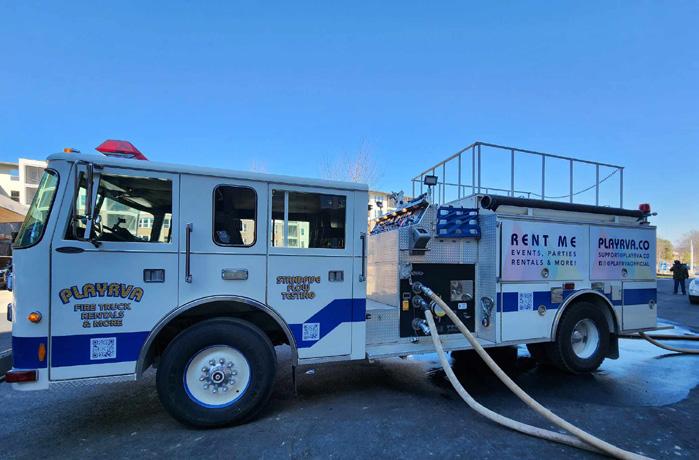
FLOW is happy to announce its first full year of operation conducting standpipe flow testing for commercial and residential buildings. FLOW entered the flow testing business after being contacted by a general contractor with the immediate need for a flow test to be issued for an occupancy permit in Fairfax County, Va., and has hit the ground running since.
Employing a 1994 1250 GPM Pierce Saber with less than 2800 hours on the engine and less than 600 hours on the pump, over 25 tests have been performed. Their certified former firefighter/driver pump operators who perform these tests have successfully passed 100% of the tests FLOW has been contracted to perform as administered by multiple jurisdiction fire marshal offices. Operations will extend in the coming years, whether it’s new construction needing to pass a flow test for an occupancy permit or annual/semi-annual standpipe testing for regulations, peace of mind, or insurance purposes. Visit StandpipeFlowTesting.com.

Victaulic will expand its Lawrenceville, Pa., facility to increase production capacity and meet the demands of North American customer base. Headquartered in Easton, Pa., Victaulic’s $100 million expansion project will create 214 new full-time jobs, adding to the more than 1,600 employees already working across the Commonwealth. Worldwide, Victaulic employs more than 4,500 individuals.
When complete the 150,000-ft2 addition to the Lawrenceville foundry will accommodate new molding lines, melt furnaces, core machines, automated finishing, and paint equipment. The expansion will also include a 60,000-ft2 machine shop with state-of-the-art CNC equipment. To assist development efforts, Pennsylvania’s Governor Josh Shapiro and the Department of Community & Economic Development have awarded Victaulic $1.5 million in grants. Visit Victaulic.com.
In support of its mission, the National Fire Protection Association® (NFPA®) has announced the establishment of a separate fully owned company, NFPA Global Solutions™, which offers compliance solutions, digital products, and advisory services, via acquisitions and new business development. NFPA Global Solutions has announced the acquisition of Dyne Fire Protection Labs, an independent testing laboratory that helps maintain compliance with critical fire protection codes and standards.
NFPA Global Solutions is led by Carlos Correia, president of NFPA Global Solutions. This is the company’s first acquisition as part of a strategic plan aimed at achieving greater influence on safety globally. Visit NFPA.org.
The National Fire Protection Association® (NFPA®) announced that the article “Recurrent Convolutional Deep Neural Networks for Modeling Time-Resolved Wildfire Spread Behavior” was awarded the 2024 Harry C. Bigglestone Award. This prestigious award is given annually to the paper appearing in the journal Fire Technology that best represents excellence in communicating fire protection concepts. The award is accompanied by a $5,000 cash prize from NFPA. The presentation of the Harry C. Bigglestone Award and recognition of the paper’s authors, John Burge, Matthew Bonanni, Lily Hu, and Matthias Ihme, took place at the NFPA Stars at Night awards ceremony during the annual NFPA C&E.
The researchers’ use of advanced machine learning techniques to create a model that predicts wildfire spread with significant accuracy
was highlighted as exemplifying the power of technology and science in solving real-world fire and life safety problems. The award recipients were honored for their dedication, curiosity, research advancing the field of fire science, and working to ensure that communities are better prepared to protect lives and property from the devastating impacts of wildfires. Visit NFPA.org.
Winsupply Inc. has acquired Meter Service and Supply Company, a single-location waterworks distribution company based in Memphis, Tenn. Meter Service and Supply Company (Meter Supply) has been operating since 1947, providing gas, water, electrical, and sewer products to support local and regional government agencies as well as general contractors.
Winsupply Inc. has acquired Forge PolyFab. Established in 2020, Forge Polyfab specializes in crafting high-quality HDPE fabricated products utilizing feedstock from the most premier PE manufacturers in the US. Their primary focus is producing fabricated PE fittings to meet the increasing demand for HDPE infrastructure across the United States. With modern state-ofthe-art equipment and certified fabricators, the Forge team is committed to producing products that meet or exceed all current industry standards, ensuring the consistent delivery of top-tier products at every opportunity. Headquartered in the Dallas-Fort Worth metroplex, Forge Polyfab is strategically located to efficiently serve this nationwide growth.
Winsupply Inc. has acquired General Metals Manufacturing & Supply Company. Founded in 1952, General Metals Mfg. & Supply Co. (General Metals) is a Phoenix, Ariz.-based company engaged in the manufacturing, fabrication, and wholesale distribution of HVAC equipment and products. Its primary clientele is comprised of HVAC contractors in the Southwestern United States. It is a known enterprise with a long-standing and excellent reputation. Visit Winsupply.com.
Mass Marketing Insurance Consultants, Inc. (MMIC) advises a realistic approach to providing quality health insurance benefits is to combine the stability of traditional health plans with the cost-savings new fully funded health

plan options available without taking on any added risk.
Fully funded health benefit plans behave like a traditional fully insured health plan. Monthly premium payments are determined upfront and guaranteed not to increase for a full year. The fully funded group health insurance plans feature: deductible options from $1,000 to $5,000, co-insurance options of 80%, 70%, and 50%, office visit co-pays, RX copays, and access to large national networks.
MMIC also offers PPO, HMO, and HSA from traditional health insurance companies. Obtain a free no obligation quote and compare the benefits and rates to your current health insurance plan. Email quotes@mmicinsurance.com, or visit mmicinsurance.com to complete the proposal request form.
Fayette Pipe has announced its recent approval by the New York School Construction Authority (NYSCA). Effective immediately, Fayette Pipe is included on the NYSC’s list of approved manufacturers for Section 15510 HVAC Piping and Section 15410 Plumbing Pipe.
The NYSCA manages one of the largest school construction programs in the U.S., which includes the planning, design, and construction of new and existing school facilities across New York City’s five boroughs. The NYSCA approval underscores Fayette Pipe’s commitment to producing piping solutions that meet the rigorous standards required for educational facilities. This includes adhering to safety standards such as maintaining maximum water outlet temperatures at 120oF to prevent scalding and providing high-quality piping that supports energy-efficient HVAC systems. Visit FayettePipe.com
Only one-fifth of federal investments in postsecondary education support workforce development for fields like construction and manufacturing, while the rest of the money goes to “traditional” degree programs according to a new report on federal workforce funding levels released June 13.
The report was produced by the Progressive Policy Institute, the Associated General Contractors of America (AGC) and Procore, notes that
this funding gap is making it hard for many employers to find qualified workers to hire.
The report, titled “Building a Stronger Workforce: Federal Spending on Postsecondary Education and Training,” notes that of the $139.5 billion the federal government spends annually on postsecondary education, only $28.2 billion goes to workforce education and training programs. The other $111.3 billion supports “traditional” degree programs that only 38 percent of Americans complete.
The funding gap is making it hard for employers in fields like construction and manufacturing, which typically require specific training not offered by traditional degree programs, to find enough qualified workers to keep pace with demand. The report notes that the Bureau of Labor Statistics shows the construction industry alone has over 407,000 unfilled position and that figure is expected to continue growing. Meanwhile, 88% of construction firms report having a hard time finding workers to hire.
Included in the report are recommendations on how federal policy makers can help address workforce shortages for in-demand industries. The report also recommends new investments in faster and more flexible training programs like Virginia’s FastForward program. The report urges new incentives to encourage employer- centered workforce education and training partnerships. Visit AGC.org.
The National Fire Protection Association® (NFPA®) announced that the project on Validating Cleaning Procedures for Firefighter Personal Protective Equipment (PPE) was awarded the 2024 Fire Protection Research Foundation Medal. This prestigious award recognizes a project completed in the previous year that best exemplifies the Research Foundation’s fire safety mission, commitment to tackling technical challenges, and collaboration on project execution.
The presentation of the Fire Protection Research Foundation Medal and recognition of Jeff Stull, Crystal Forester, Jay Tarley, and Marni Schmid took place at the NFPA Stars at Night awards ceremony during the annual NFPA C&E. Visit NFPA.org.
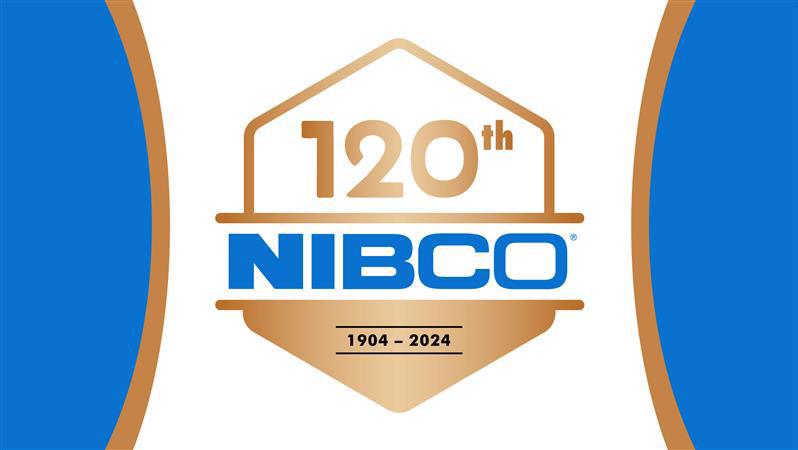
NIBCO INC. is celebrating its 120th anniversary in 2024. For 120 years, NIBCO has stood the test of time, providing innovative and reliable products and establishing itself as leader in the manufacture of flow control products.
During 2024, NIBCO is planning celebrations for its shareholders, associates, customers and partners, which will continue throughout the year leading up to the official anniversary date on November 12, 2024. Executive team visits to each individual facility location to thank associates for their dedication will begin at the end of May. To commemorate the anniversary, NIBCO also created special throwback merchandise. Visit NIBCO.com. n











